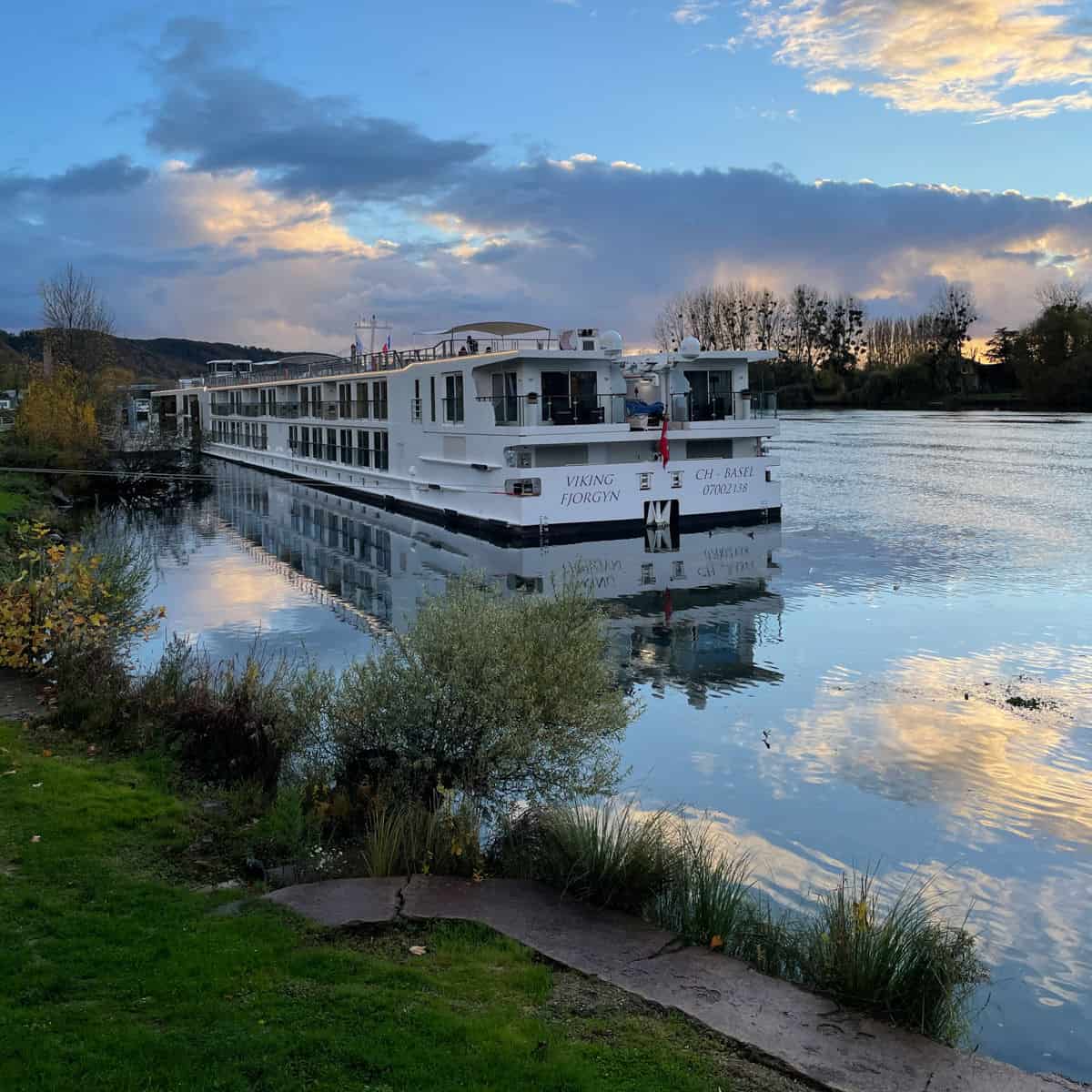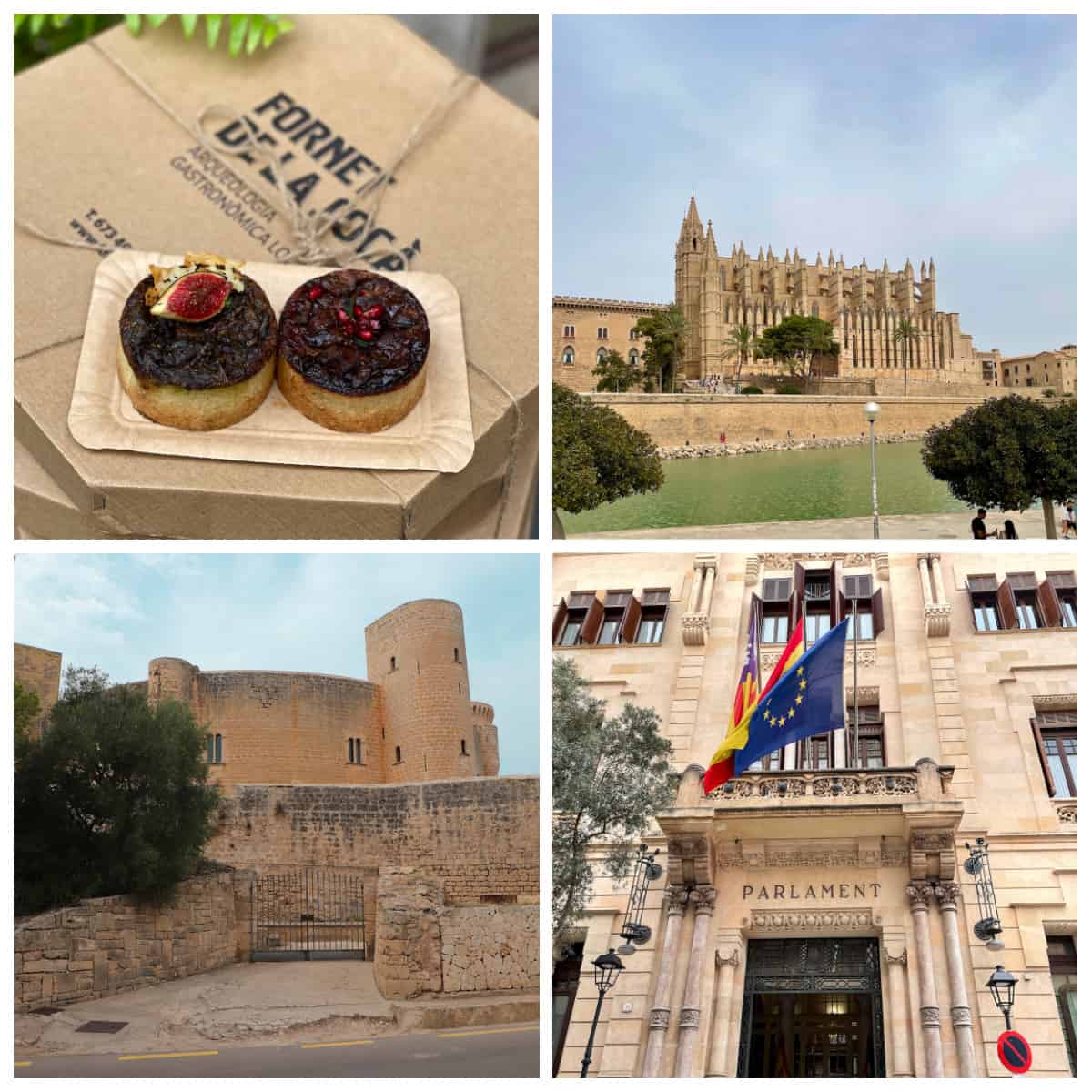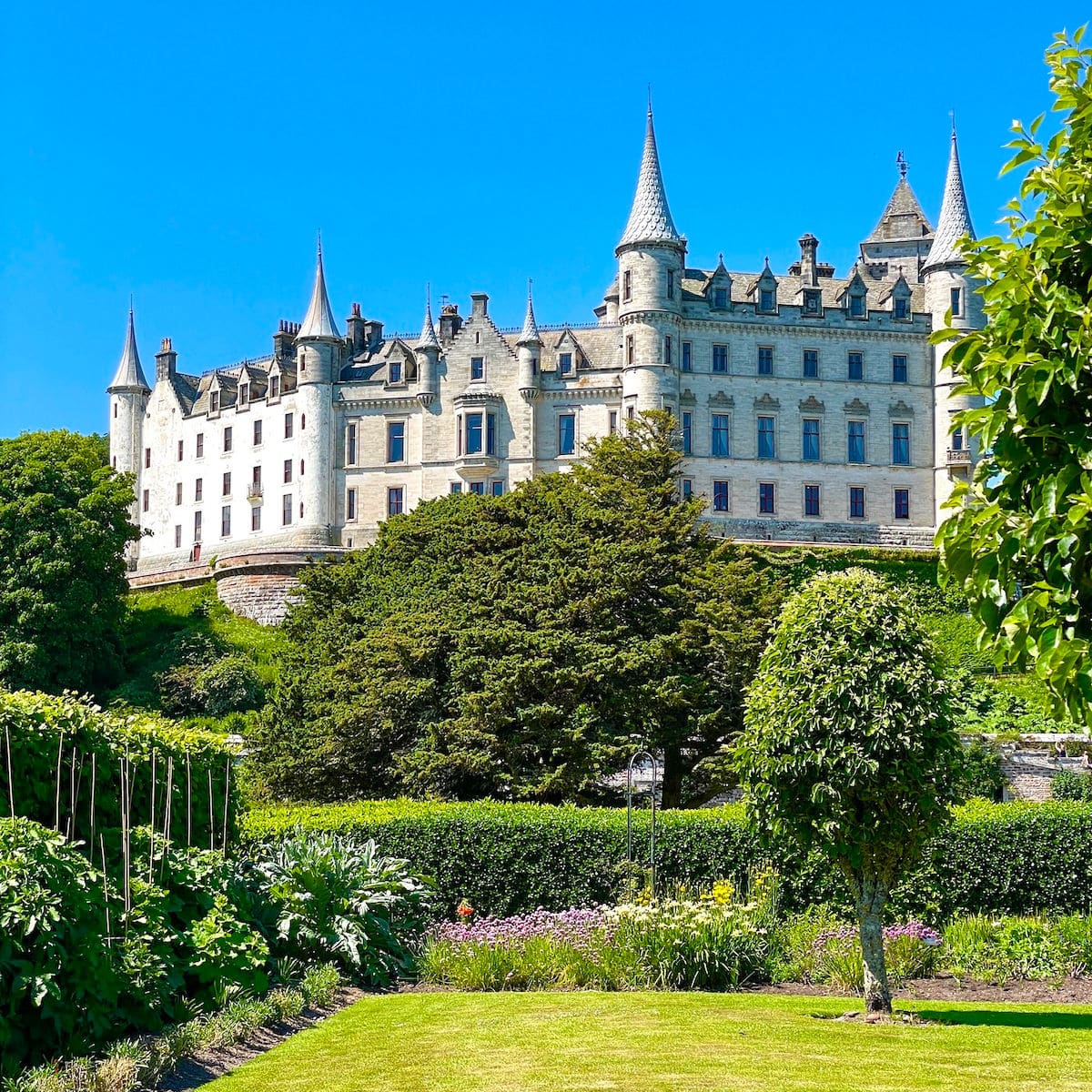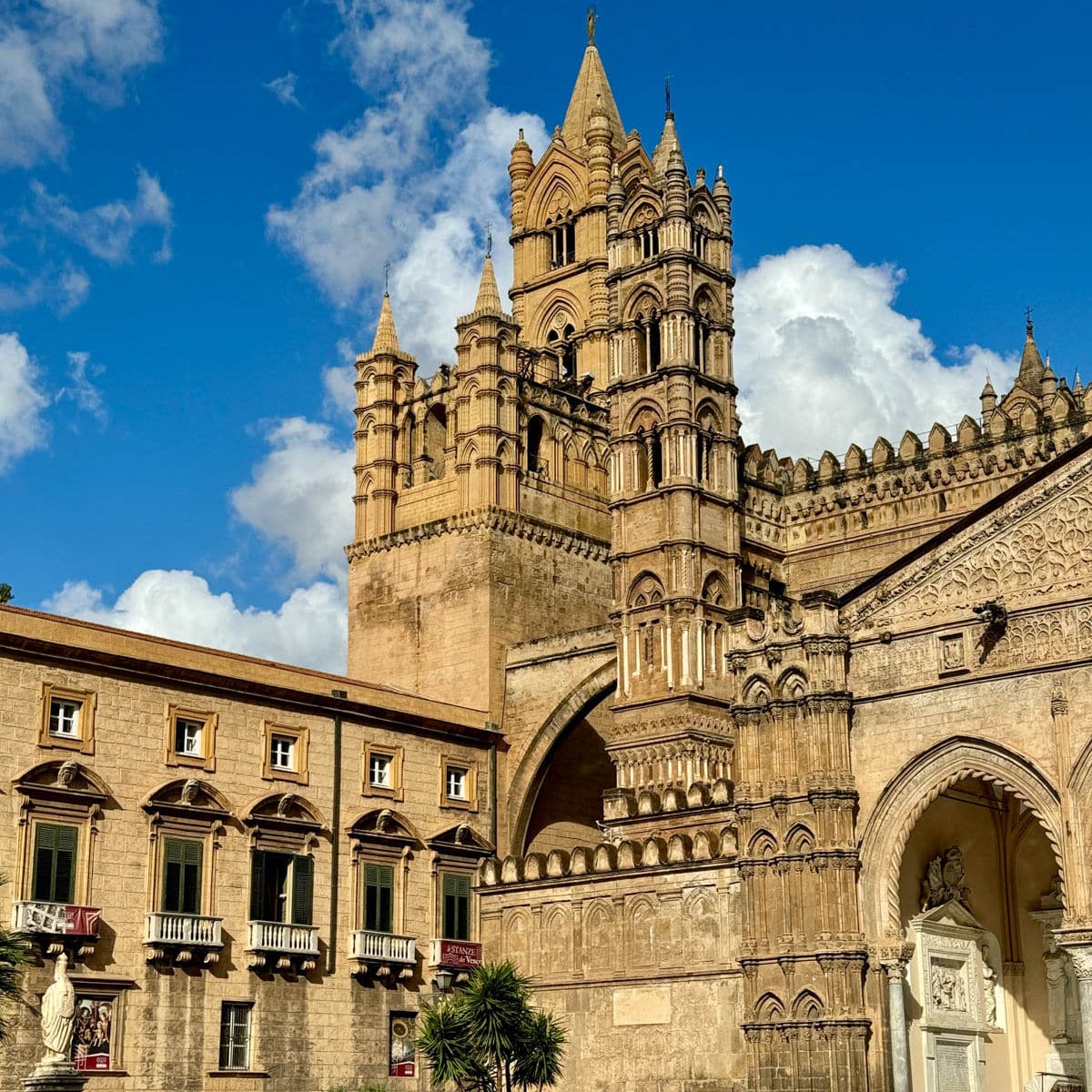Best Places to Visit in Sicily Italy 2025
With stunning coastlines and fascinating historical sites, there are so many wonderful places to visit in Sicily, Italy, and you’ll want to save this list so you can see them all.
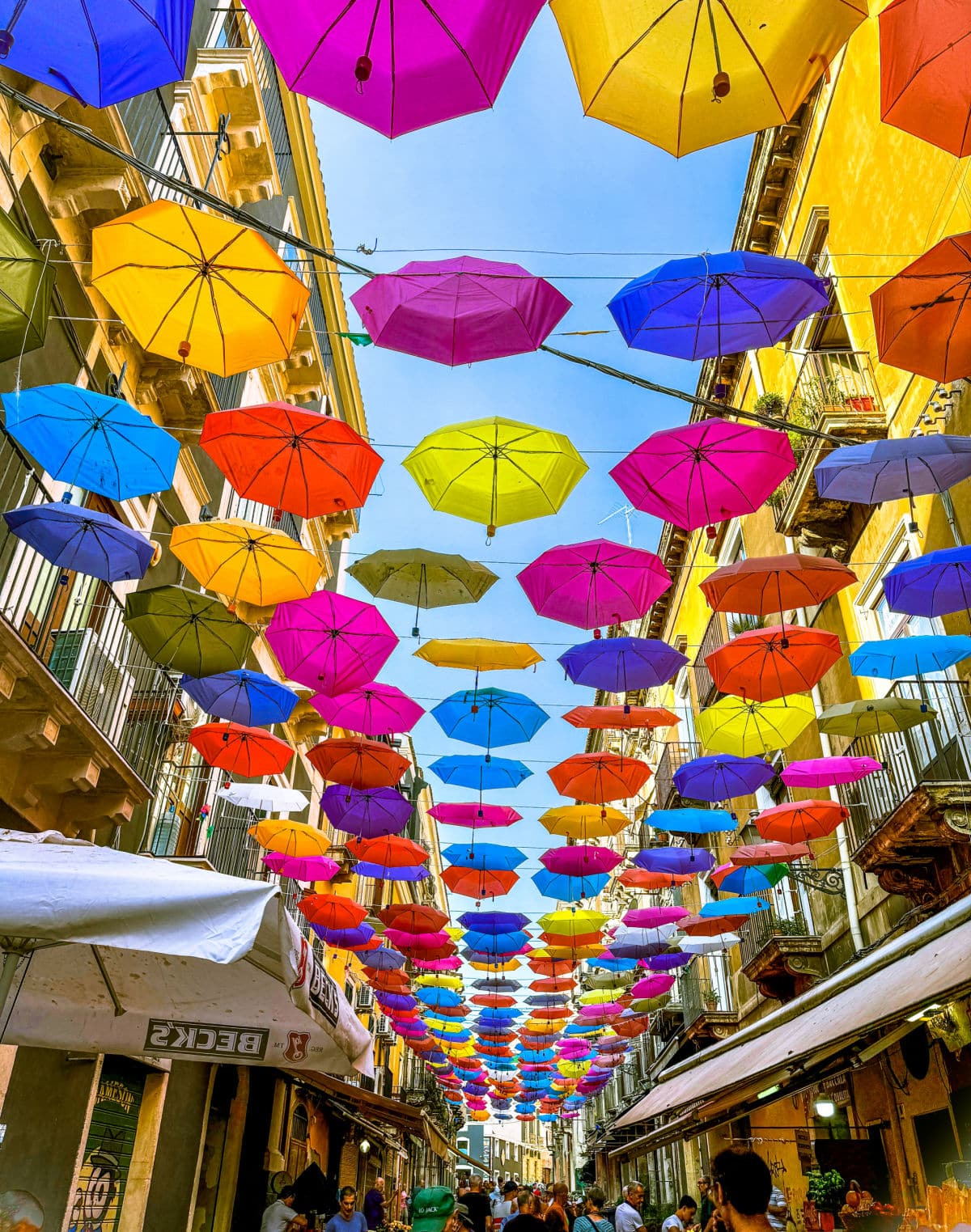
Located just off the tip of Italy in the Mediterranean Sea, this island is filled with an incredibly rich history and culture. And of course, if you’re looking for amazing food or unique experiences, Sicily is one of the best places to visit!
Below are some of the highlights of Sicily that prove this is a location that should be high on your list for a wonderful vacation destination. I explored Sicily with Exodus Adventure Travels, and it was an epic trip.
Table of Contents
Where is Sicily?
Sicily is an island located at the tip of the boot of Italy. The largest island in the Mediterranean Sea, it’s surrounded by temperate waters and has a relatively mild climate.
Each spot we visited is marked on the map below.
Historically, the location of Sicily has made it a key location for settlement by various groups including the Phoenician, Greek, Roman, Arab, Norman, Spanish, British, and more. This has led to a blending of cultures, architectural styles, foods, and more.
There is a bridge that connects Sicily to mainland Europe through Italy, and the island has several airports, as well. To fly to Sicily from Rome is a short trip, just over one hour. See my 3 Days in Rome itinerary if you’re heading there.
👉 Planning your trip now? These are the perfect Sicily Food Tours:
Palermo Street Food Walking Tour
Catania Street Food Walking Tour & Market Adventure
Etna Countryside Food & Wine Tour
Taormina Sicilian Street Food & Wine Tour
👉 Find affordable hotels all around Sicily.
When is the best time to visit Sicily?
For my trip in September, the weather was amazing. If you like beach time, July and August are busy because the weather is pretty warm and it’s a great time for water activities like snorkeling and diving.
If you’re looking for the best value, traveling between November and March will save you a bundle. On the other hand, since it is the slow season, some resorts on the coast may not be open.
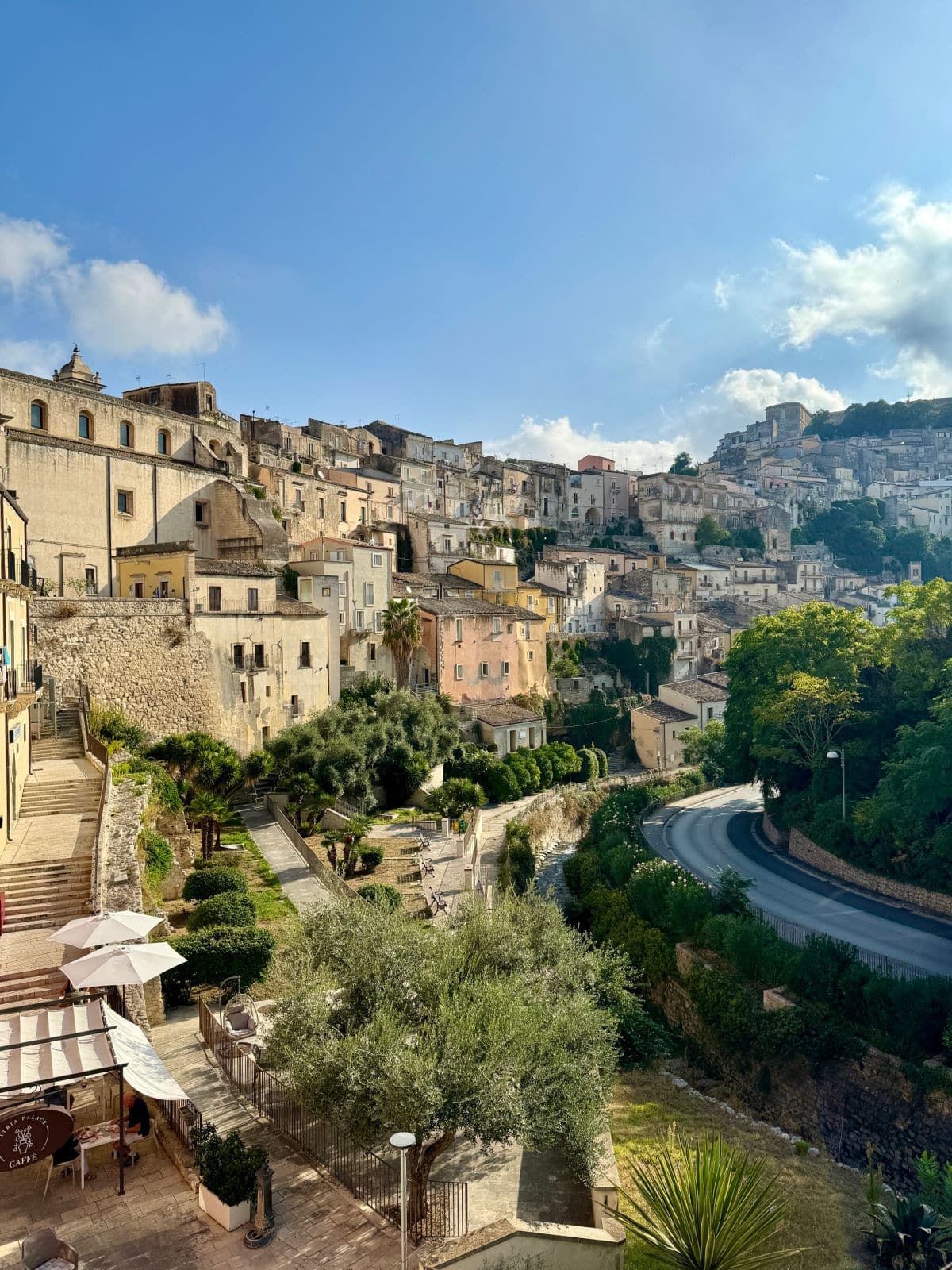
On a tour of Sicily, you can visit many different towns and cities, each with its own unique attributes.
My tour with Exodus Adventure Travels was a road trip around the coast of Sicily except for the day trip to Piazza Armerina to see the world-famous mosaics, which is a must.
Here’s what you can experience in different locations around the island.
Palermo
Palermo is the regional capital and largest city in Sicily. As a busy port city, there is so much to see and do including beautiful Baroque architecture, museums, and churches.
The city was bombed very heavily during WWII. Some of the raids caused a lot of damage to the city. Many historic palaces and churches were destroyed, but thankfully, many of the historic structures were rehabilitated.
Where is Palermo?
Palermo is located along the northwest coast of Sicily. Its location along the coast means gorgeous weather and some of the best views you can find.
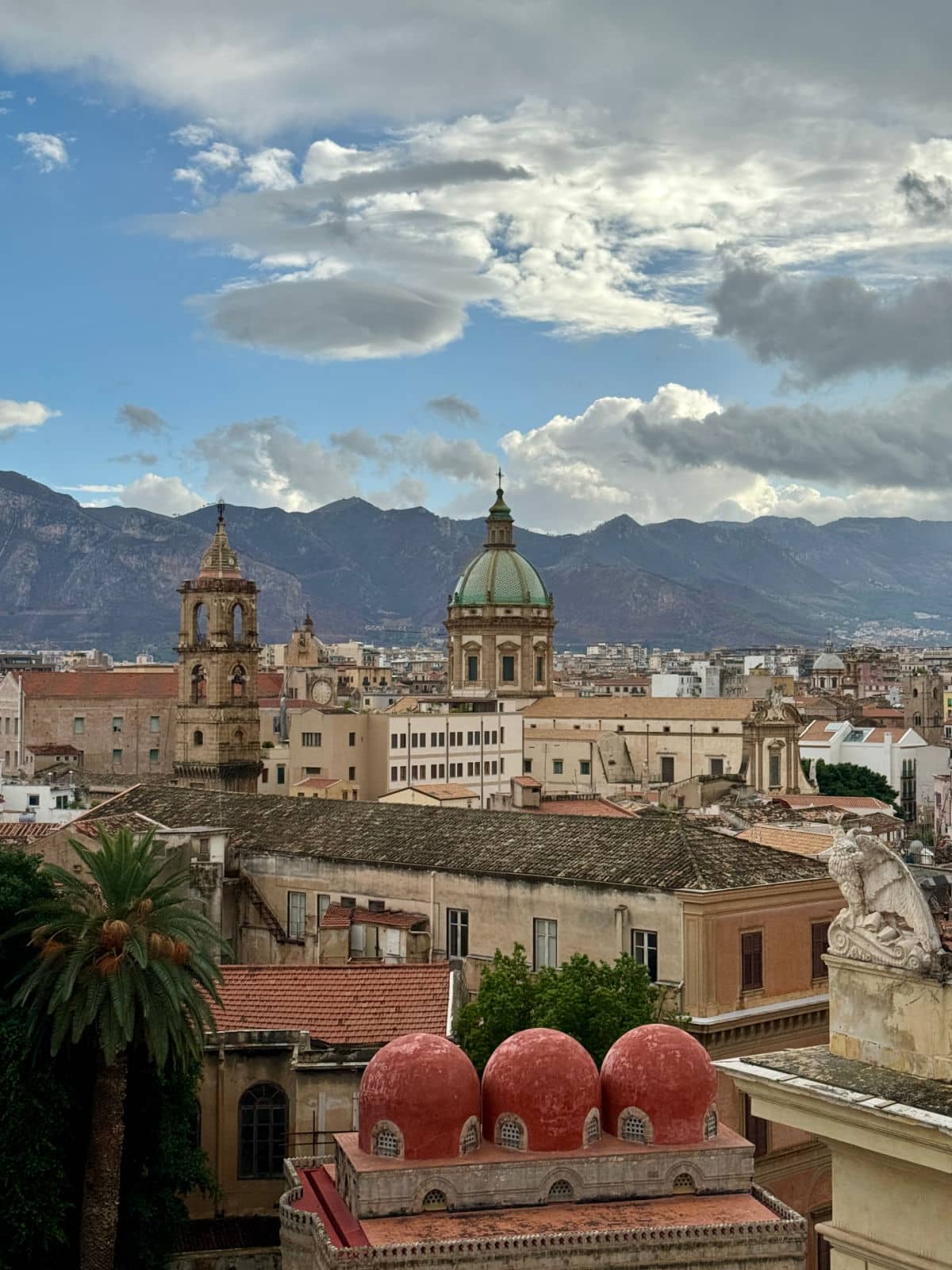
You can access Palermo by ferry from ports like Genoa, Civitàvecchia, Naples, Malta, or Sardinia. If you’re driving, there’s a ferry from mainland Italy to Sicily across the Strait of Messina and then you take the highway along the northern coast to reach Palermo. There’s also train service (and yes, crossing the Strait of Messina by train ferry!) and of course flights into the Palermo area.
Things to See and Do in Palermo
There is so much to do in this capital city, I created a guide for the best things to do in Palermo. Take a look and plan ahead of time to see all the sites like Quattro Canti, Piazza Bellini, and Palermo Cathedral, as well as what to eat.
We had an optional afternoon visit to Monreale and the ‘duomo’ but we decided to visit another museum that was closer instead.
That gave us time to wander through the carts and kiosks of street vendors, colorful markets, and local bakeries while trying some of the best local specialties.
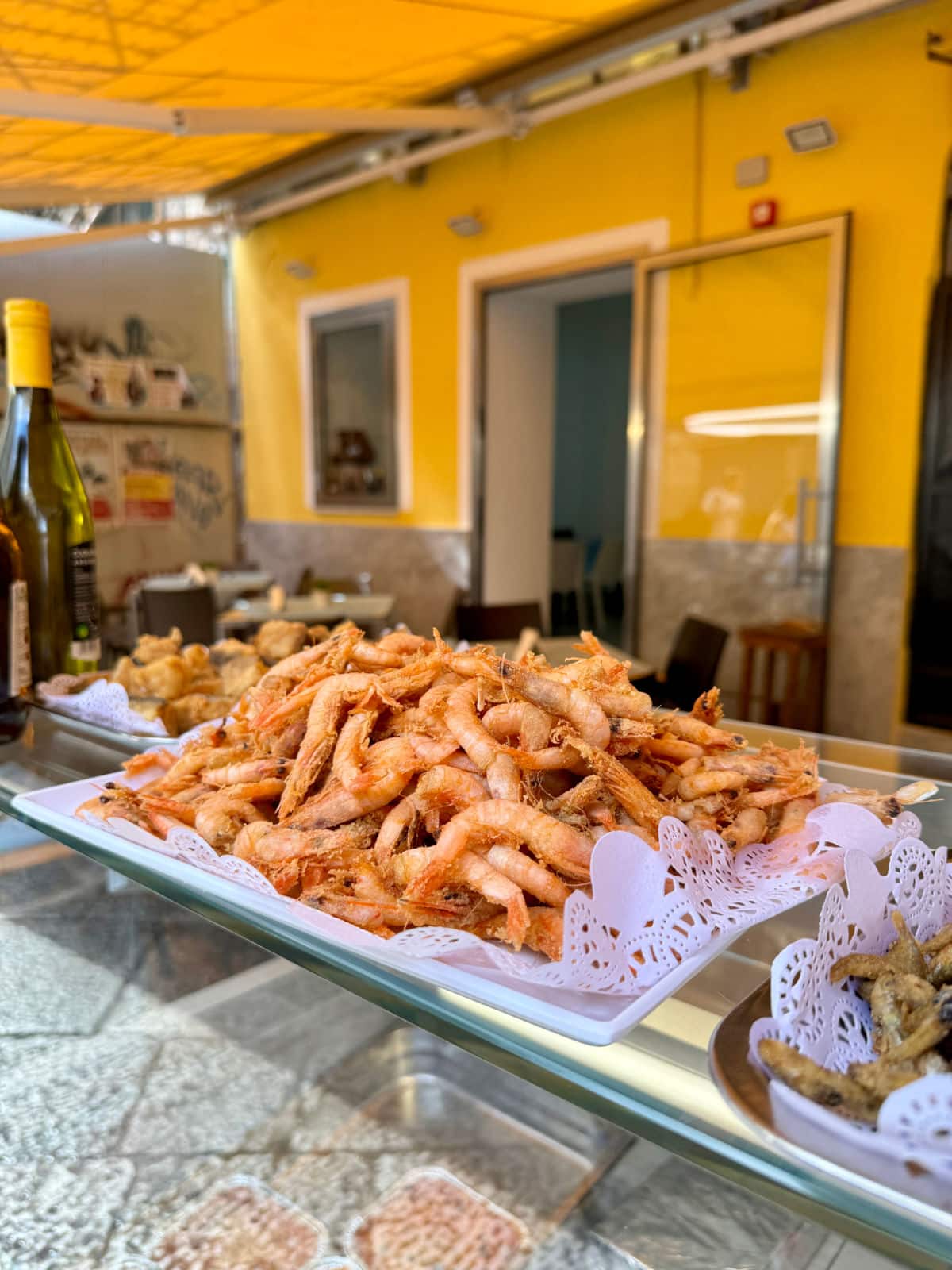
Palermo is a city that you can spend a lot of time exploring and still not see it all … or eat it all. Though I tried!
Erice
Where is Erice?
Erice is a hilltop town that is located in the far western regions of Sicily. Legend has it that the city was founded by the hero Aeneas, and it changed hands many times over its history due to its high-ground location.
What to do in Erice
Some of the most significant influences on the area are Arab and Norman cultures. This is reflected in the unique local gastronomy of the area.
During our stop in Erice, we participated in a hands-on cooking class with a local chef. With our guide translating, the chef told us about their local cuisine, while we practiced making (and tasting) traditional recipes from the region.
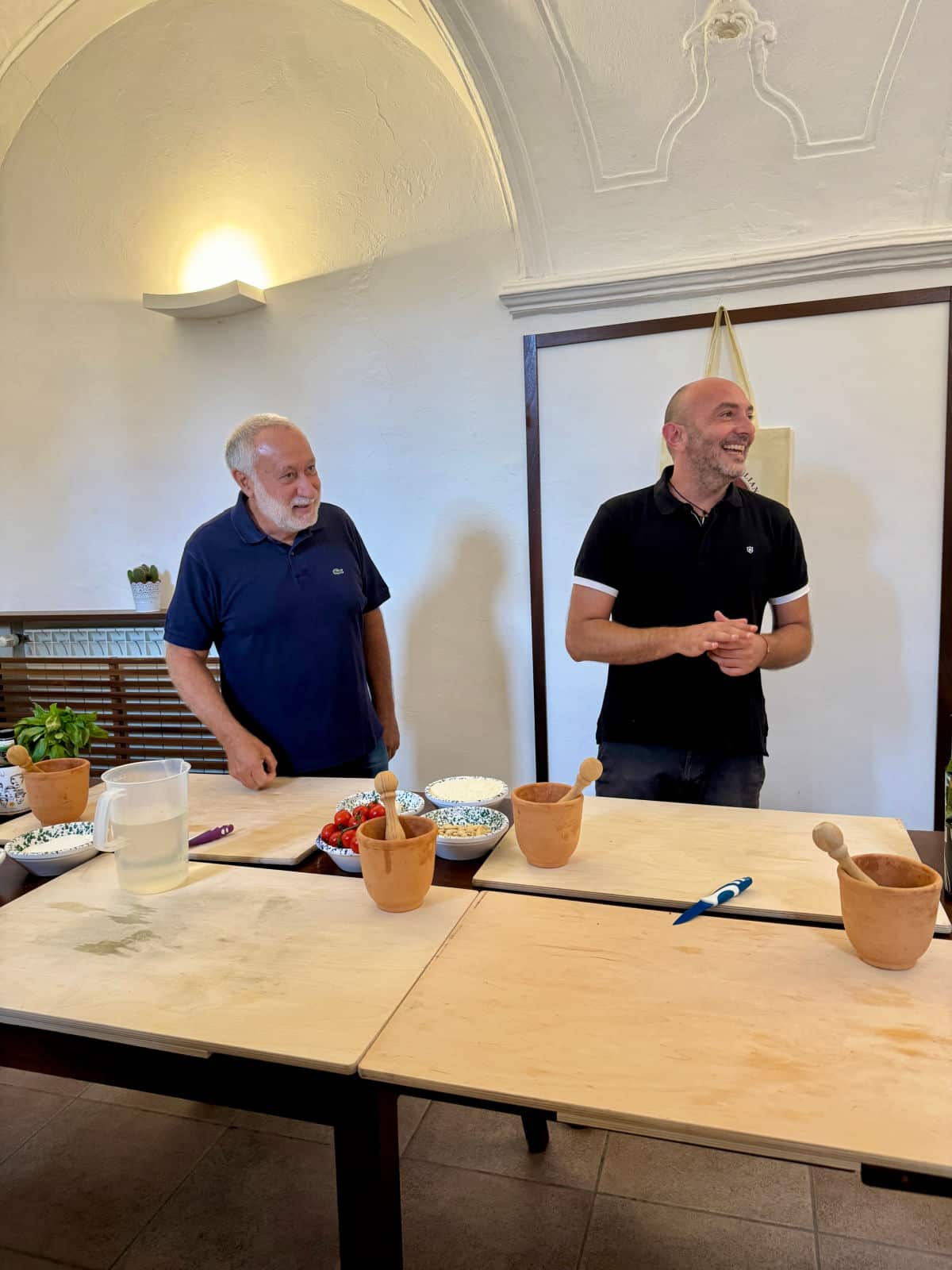
We learned to make delicious bruschetta and pasta with pesto.

We also made a recipe called Pesto alla Trapanese, a typical dish of the Province of Trapani. In ancient times, this dish was made by Trapani sailors. They believed the ingredients, found on their land, protected them from adversity as well as sickness.
A combination of tomato, garlic, and almonds was used to make the pesto. We also made the busiate, a long macaroni named after a local grass, giving it a helical shape.
Our group had really become friends during our travels together, so we were encouraging each other and showing off our pasta shapes.

We used hard durum wheat semolina flour, a special kind of flour from Sicily, to make the dough. It made incredible pasta. I’m heading to an Italian market soon so I can pick some up and share the recipe!
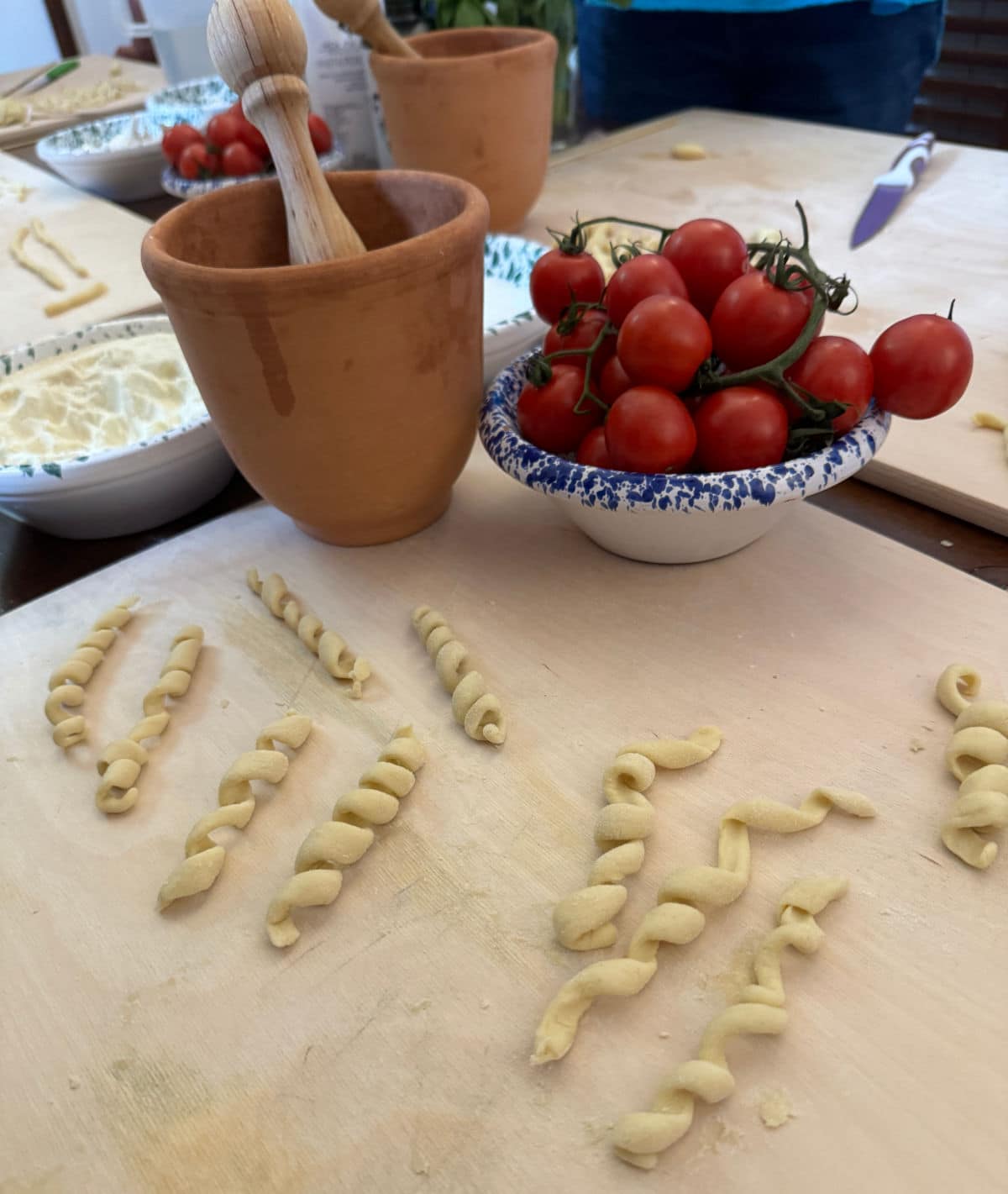
The food was certainly an attraction, but there were plenty of sights to see in Erice, too.
Some of the highlights of our visit around the town included seeing the salt flats, taking a visit to the 14th-century Duomo de Erice (the Bell Tower of King Federico), and exploring the castle and gardens at Castello Giardini Del Balio.
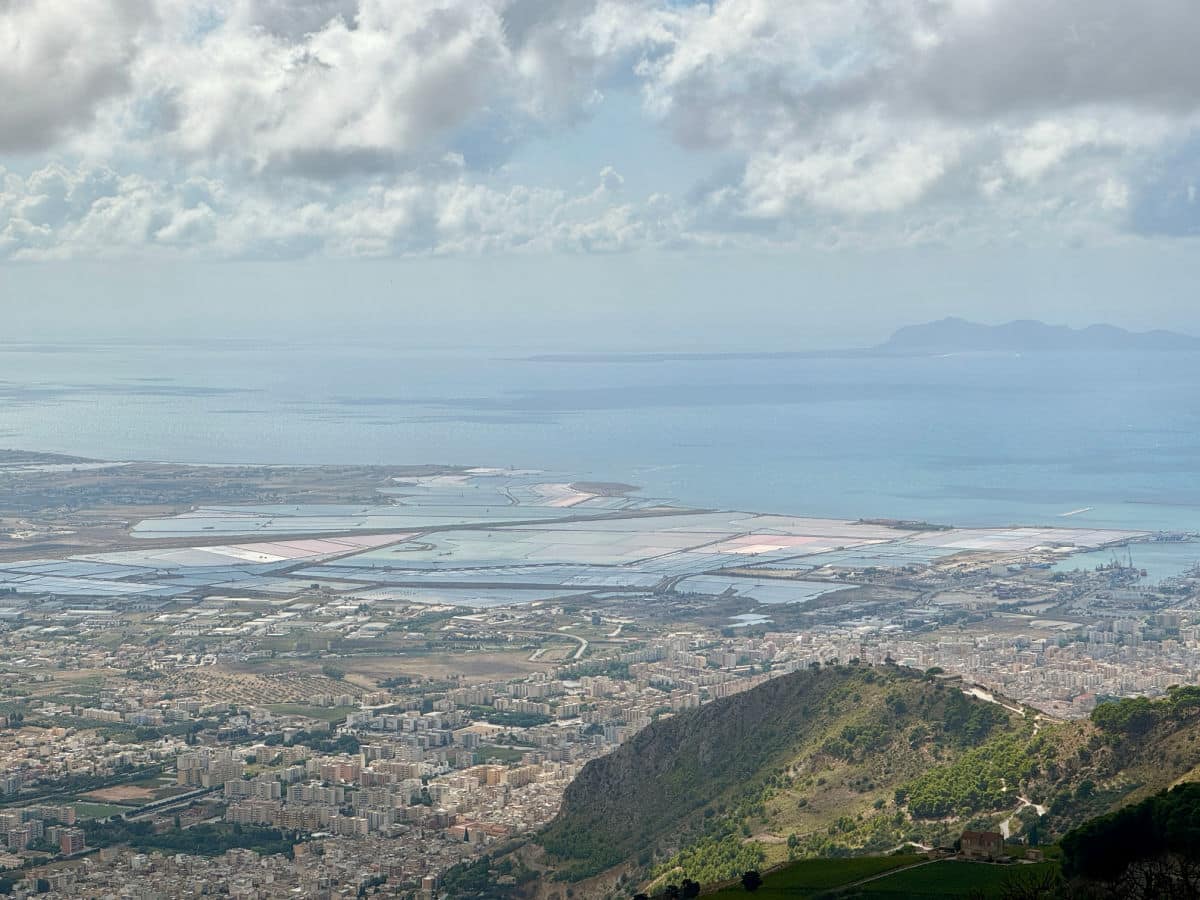
The Castello Giardini Del Balio is the perfect place for those who love history. This is a Norman Castle that has been built where there once was the 8th century Temple of Venus Erycina.
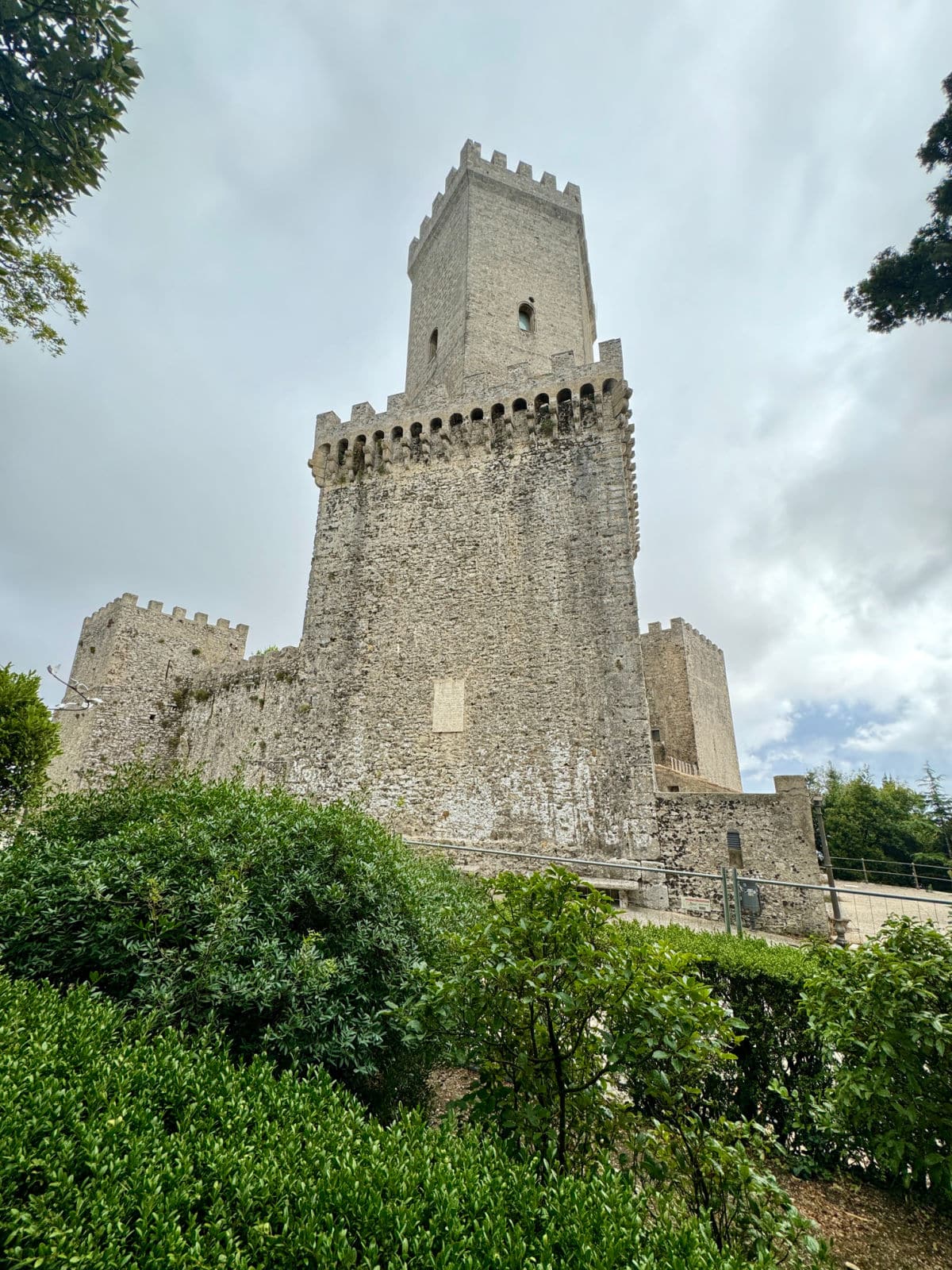
It was built on the slope so there would not be easy access to it. By the time the castle had replaced it, the temple was in ruins. At one time there was a drawbridge from the Castle of Venus to the Balio Towers of Erice.
The views from here are incredible, especially of Pepoli Tower below. Take some time to explore.

We walked a bit through the winding cobblestone streets, stopping to take photos as it was just so pretty. You’ll find maps throughout the area with listings of all there is to see.
What to Eat in Erice
The highlight of our dining in Erice came out of our cooking class. Specifically, the caponata served at lunch after our cooking class was the best I’ve ever eaten.
Think of this as a Sicilian variant of ratatouille. It is a blend of eggplant with other vegetables and an agrodolce sauce. Some of the key flavors in this also come from the olives and capers that provide a bit of zing!
Marsala
Where is Marsala?
Marsala is located in the far westernmost tip of Sicily. This city has a population of around 85,000 and offers a temperate climate with hot and dry summers and mild but wet winters.
If you recognize the name, it’s because of one of Marsala’s most famous products – the Marsala wine. It is Marsala’s key economic factor, although tourism continues to grow thanks to its beautiful beaches and relaxed pace.
What to do in Marsala
When you think of Marsala, you probably think of wine. What better way to experience the flavor of Marsala than with a wine tasting?
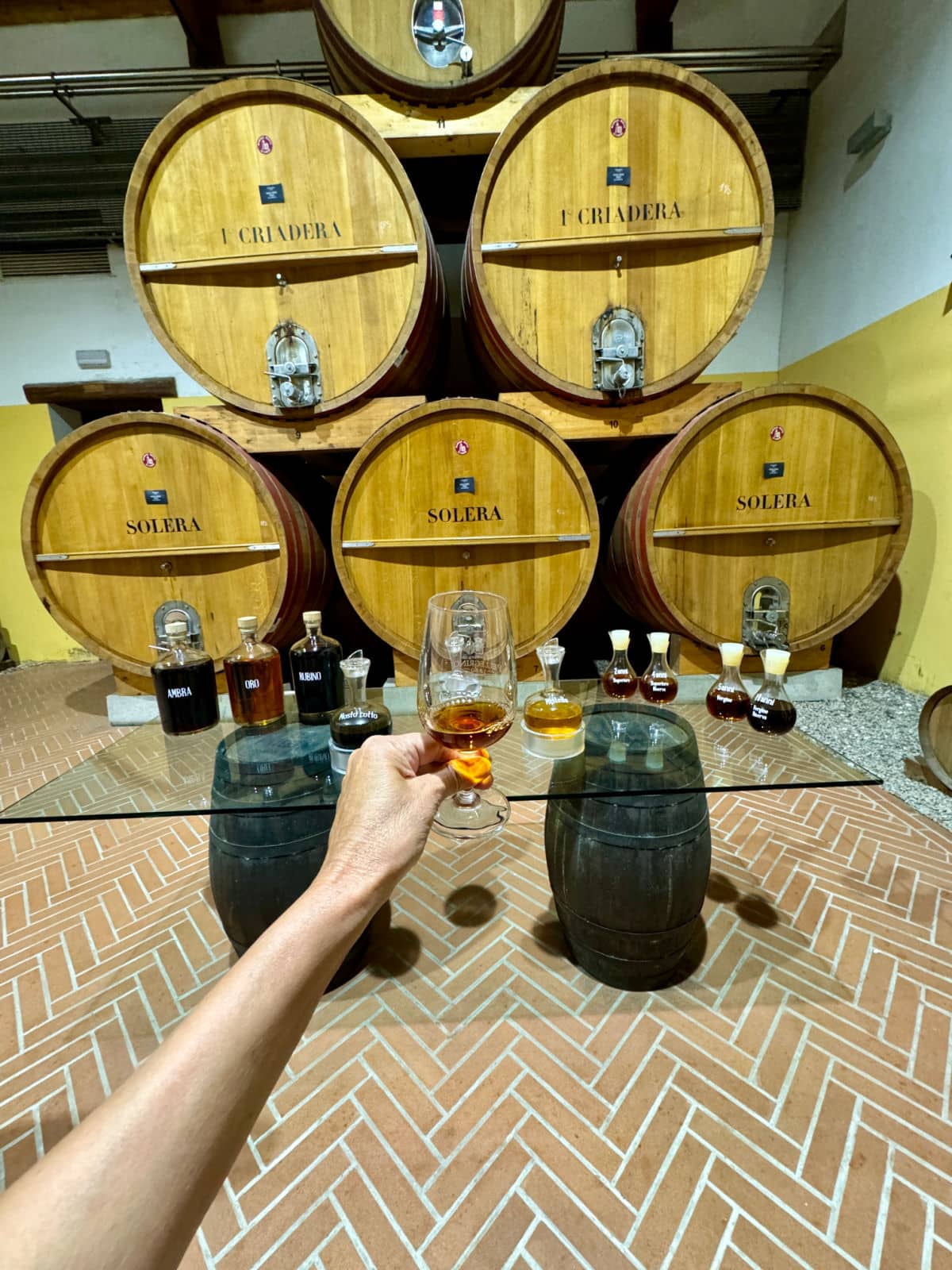
English trader John Woodhouse was headed to Mazara del Vallo to purchase soda ash, but was forced to port in Marsala by a storm. While he was in port, he tried some of the local “vino perpetuo”, wine that would be aged year after year in the same cask.
Some of the wine would be removed each year, and then it would be topped off with the annual grape harvest. He was so impressed that he decided to skip his quest to buy soda ash and instead brought wine back to England. Eventually, he set up a winery to take advantage of this special Marsala wine.
Today, the Pellegrino winery is one of the standard bearers of Marsala wine.

The Pellegrino winery has a long history, dating back to the 1880s when notary Paolo Pelligrino started a vineyard and began making wine, building on those traditions that had been in place for a century.
With the ideal weather of Sicily, the Pellegrino family has been able to create high-quality wines that have become known throughout the world.

If you stay in Marsala, check out Villa Favorita. It’s a lovely resort that also offers the experience of staying in igloo-shaped houses. It was fun.
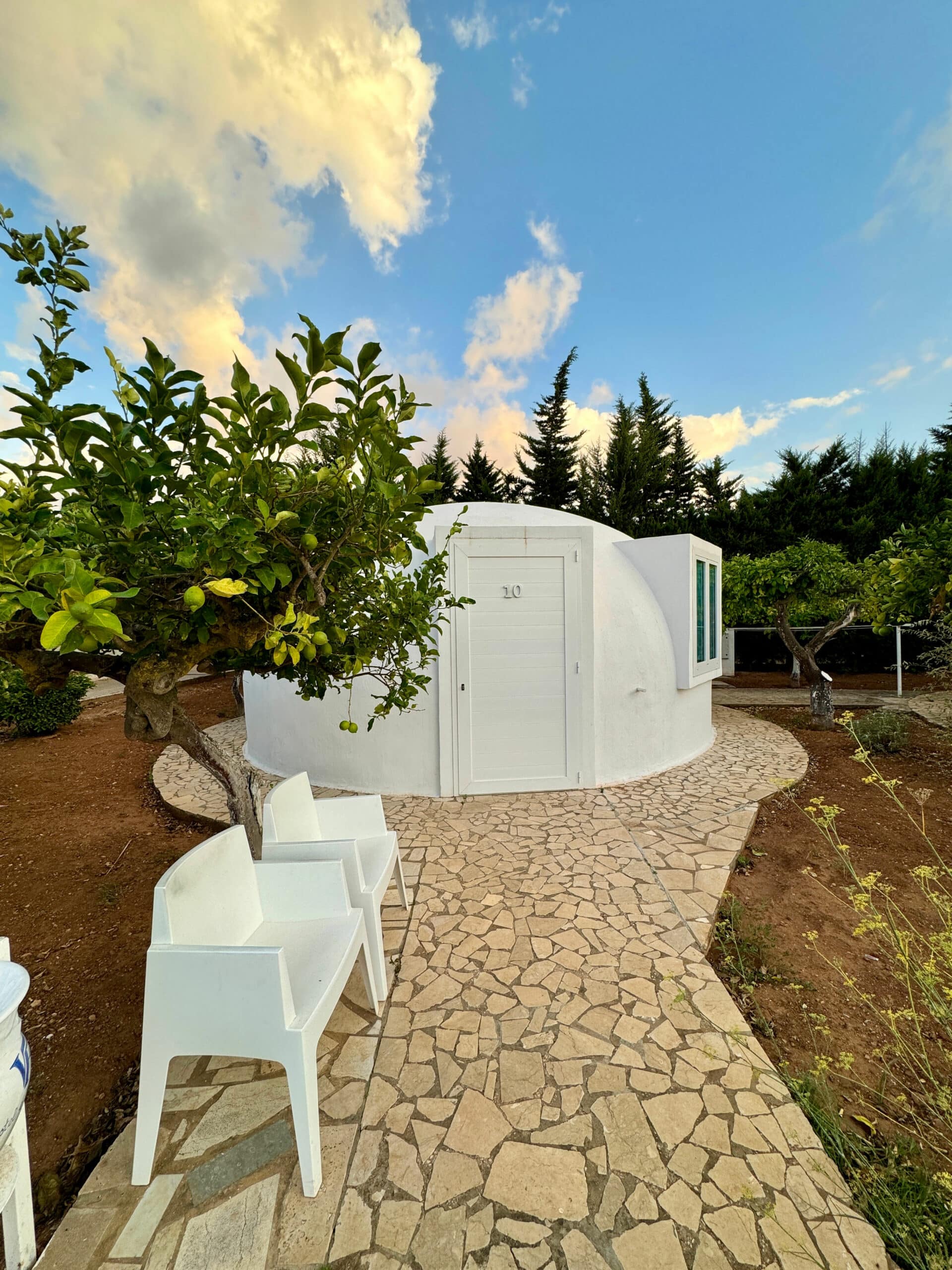
Castelvetrano
Where is Castelvetrano?
You will find Castelvetrano in the south of the western part of Sicily, in the province of Trapani.
This small town dates back to at least the 12th century with its focus on agrarian life. Farming is still an important part of the economy of the town, specifically for famed Castelvetrano olives.
What to do in Castelvetrano
If you visit Castelvetrano and don’t explore the world-famous olive industry, you’re missing out!
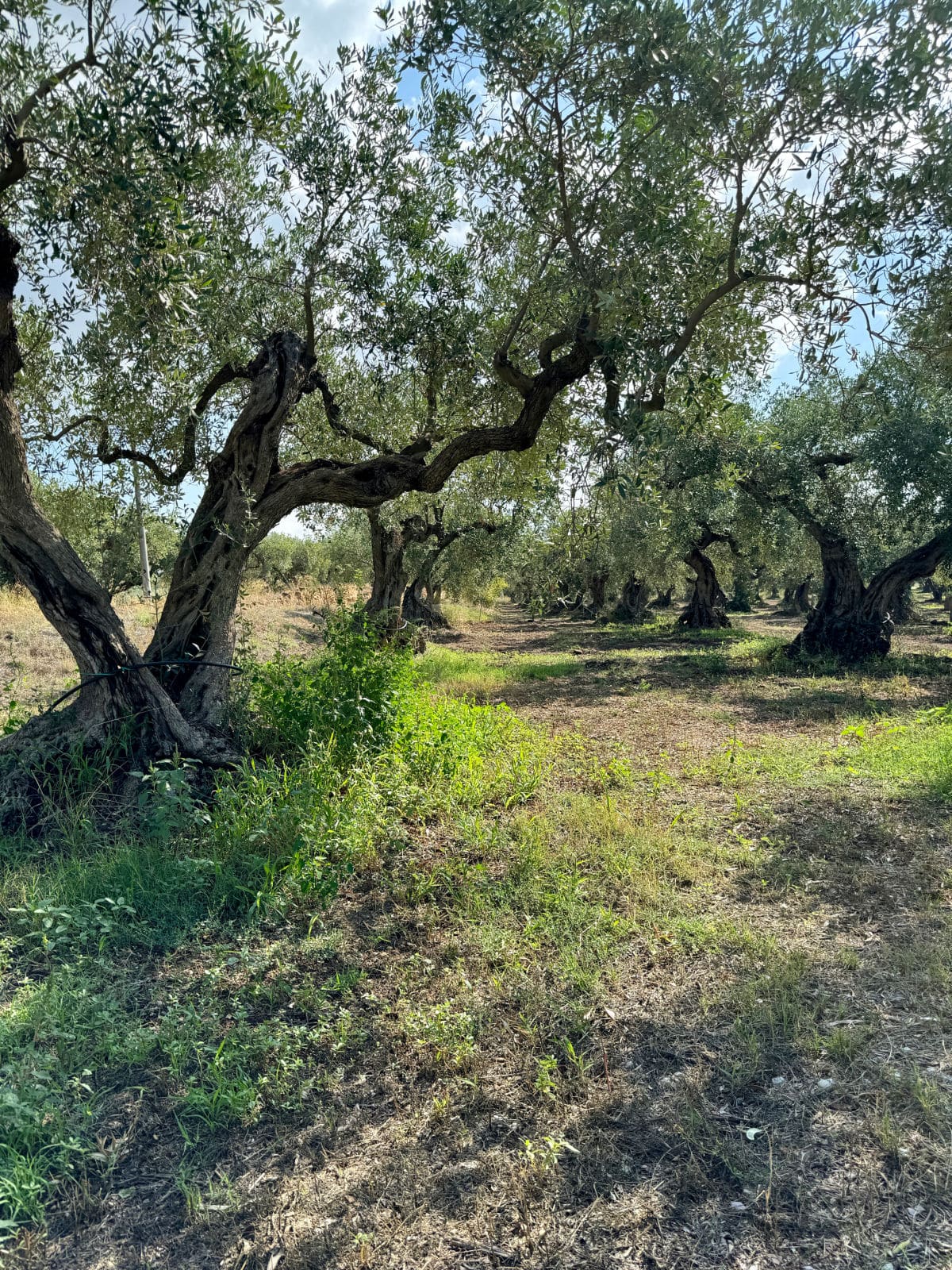
One example of the quality olive growers in the area is the farm of the Centonze family, Olio Centonze. When you visit, you can learn about olive farming, from cultivation to production of olive oil, and sample some of their olive oil.

Some of the olive trees are 200 years old or older, with one olive tree being 1,200 years old. The harvest is 10 days in October and is done by hand to be able to produce the still-green olives.
You may have seen olives being collected from olive groves by shaking the tree, but the olives must be mature for that to work, which is why collecting them by hand is done here.
Also, harvesting by hand means the olives that are ready can be taken while those that aren’t ready can be left on the tree.
All the olives are used, though not all are sold as olives. Many are pressed, including the pit which contains oil.
When you visit, they will take you through an olive oil tasting, so you can try different varieties as well as some of the foods they produce.
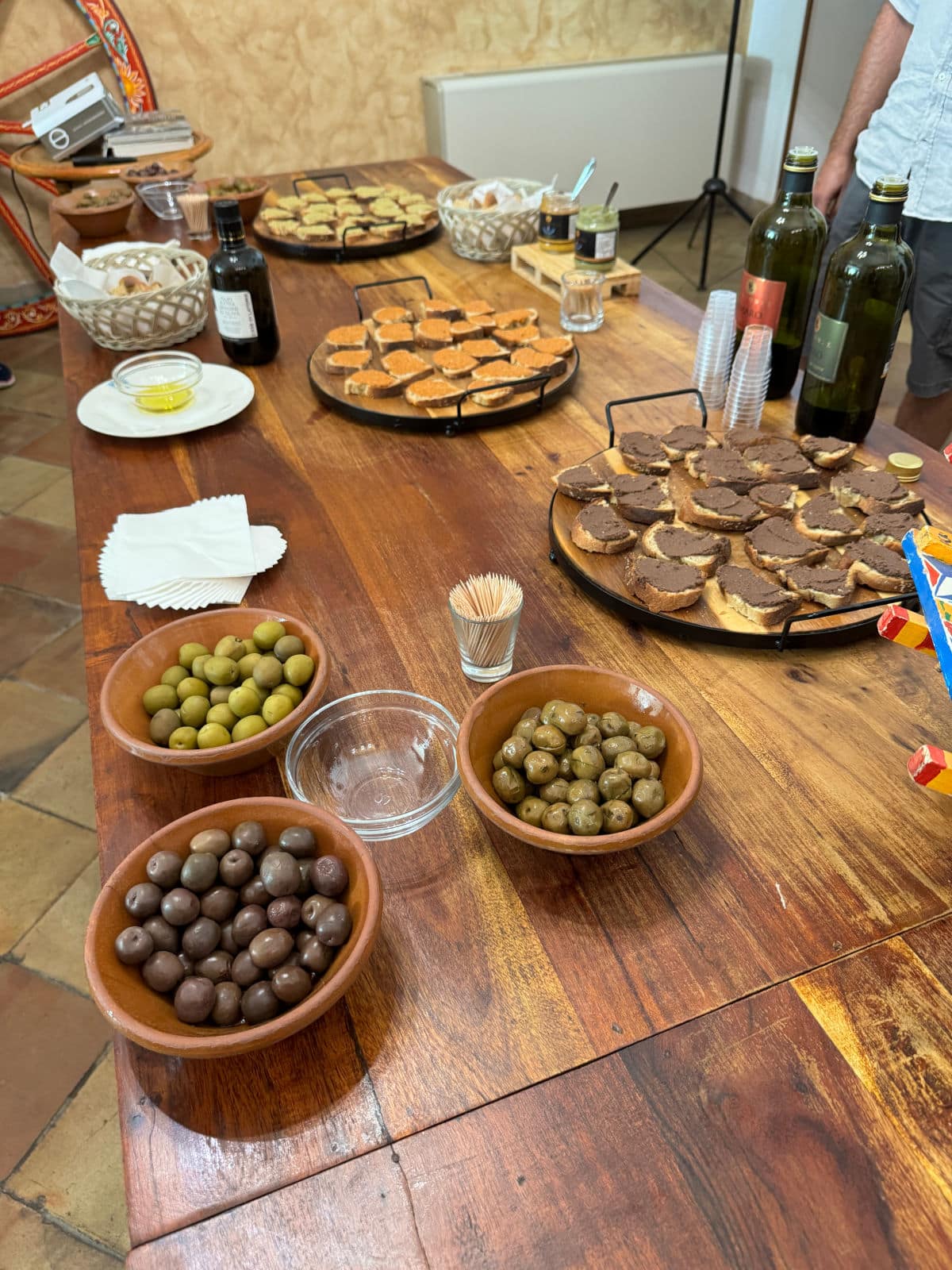
The Castelvetrano olives have a rich, almost buttery taste that won me over years ago when a recipe I was making called for them. Needless to say, I had to bring some of their exquisite products home, but nothing beats visiting and seeing the trees heavy with olives.
My tour with Exodus Travels brought us there on the Sicily Food Adventure, and it was an amazing opportunity since I didn’t find this option in my guidebook! Throughout my travels with them, we got to try so many places that embodied the local flavor of Sicily.
But there is more to Castelvetrano than just olives. We also took a trip out to the Paceco salt flats. This coastal wetlands area is a haven for migratory birds and is managed by the World Wildlife Fund.
Something unique that you might not expect here are the old star mills, also known as Dutch mills – yes, windmills! These windmills pump water between basins for salt production and then are also used to grind the salt.
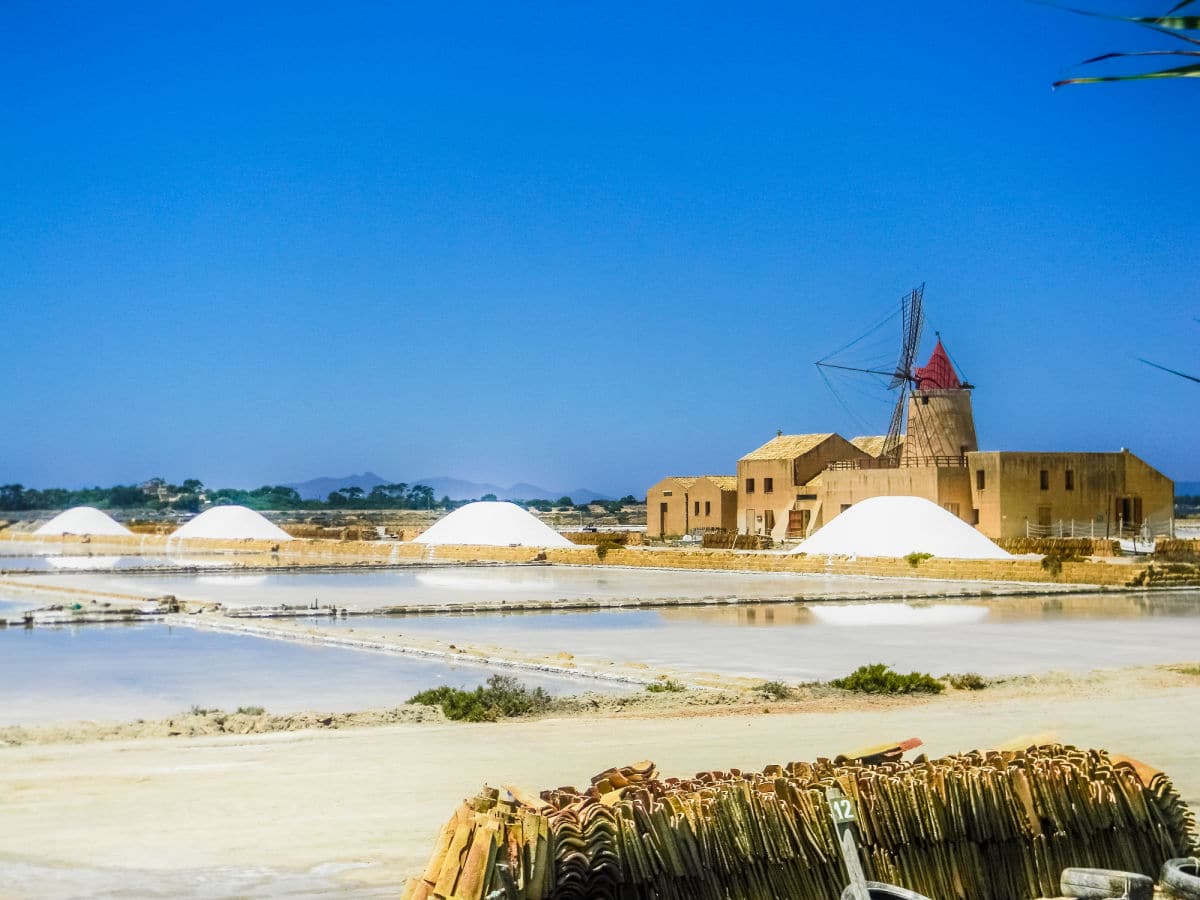
In addition to the uniqueness of this area, it’s an incredibly beautiful and photogenic place.
What to Eat in Castelvetrano
Have lunch and drinks along with music and dancing at Lido Zabbara. Located right on the beach, this lovely little restaurant had an incredible buffet of traditional Italian salads.
The menu had a lot of choices, but the highlight was the fresh-caught sardines that were grilled right there.
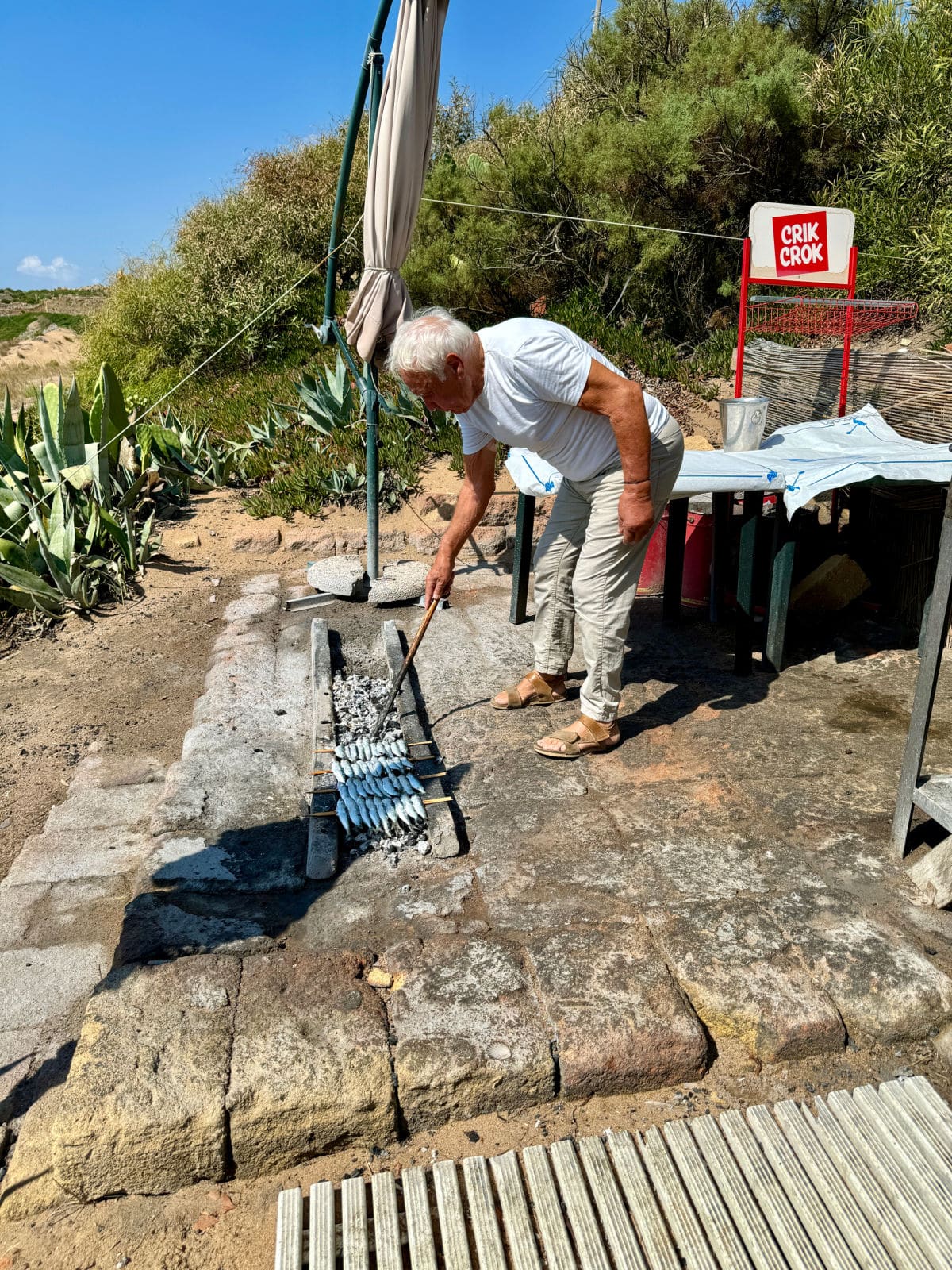
These are a specialty and not to miss in Sicily!
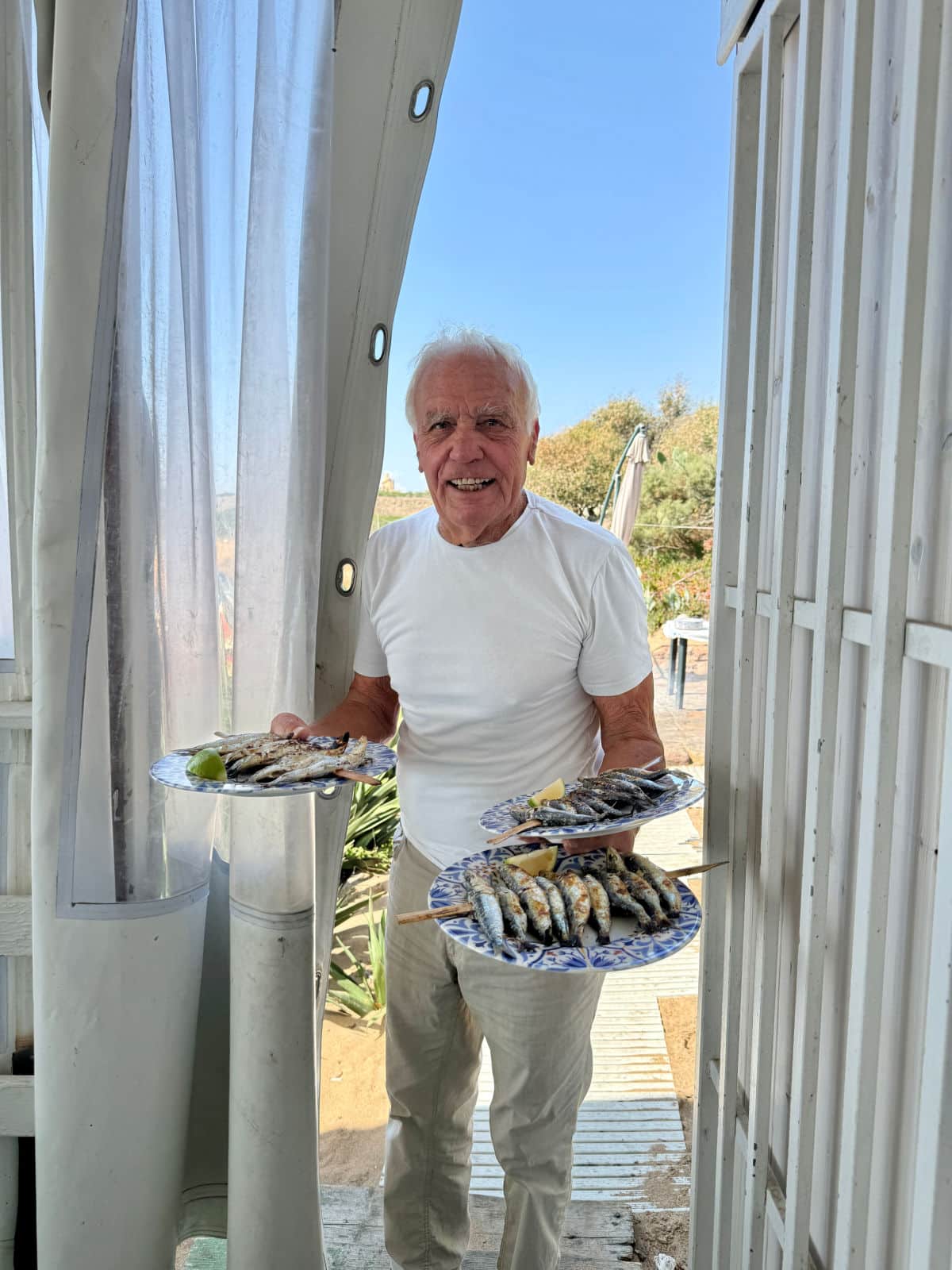
I shared an order of the sardines and enjoyed the buffet.
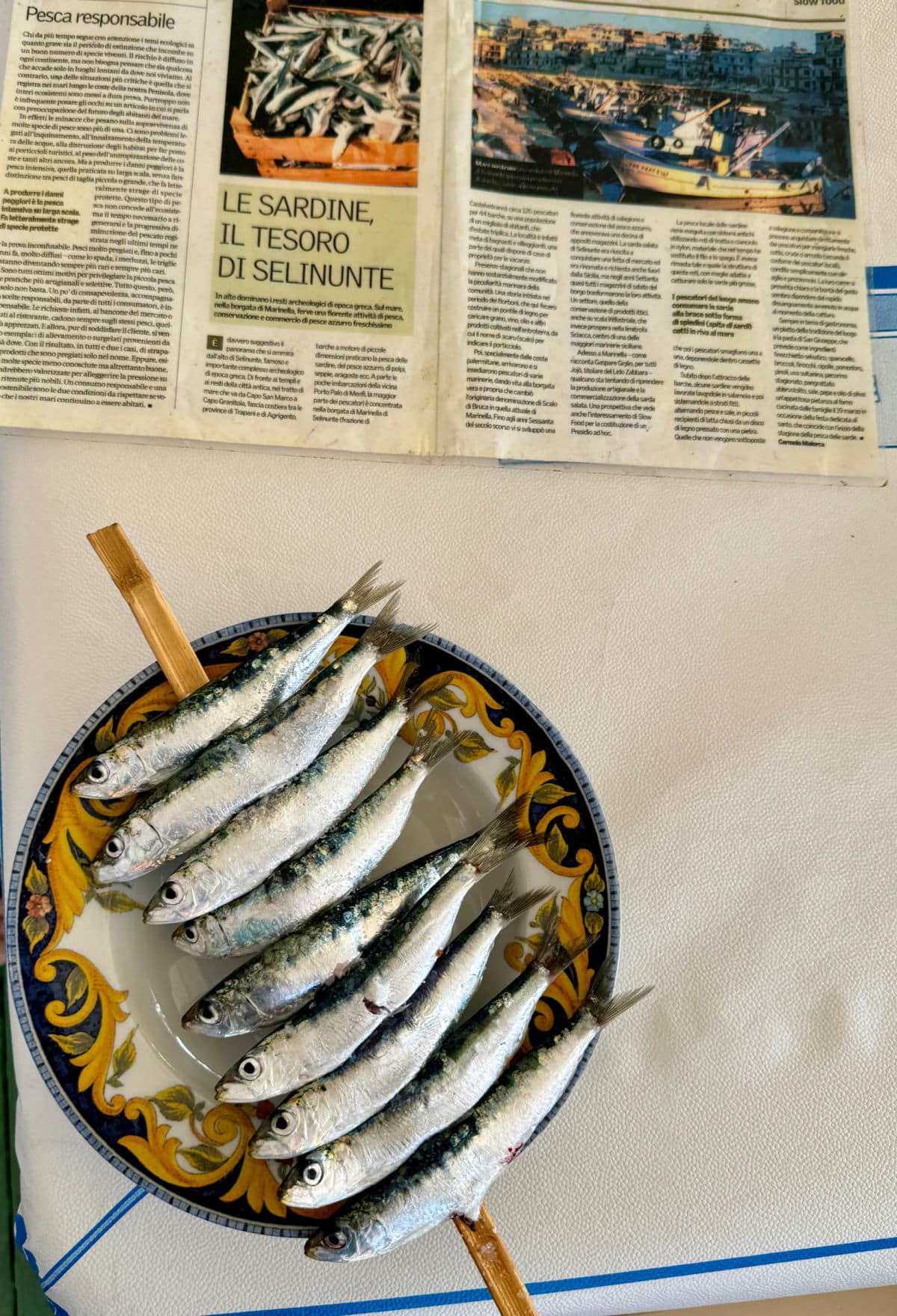
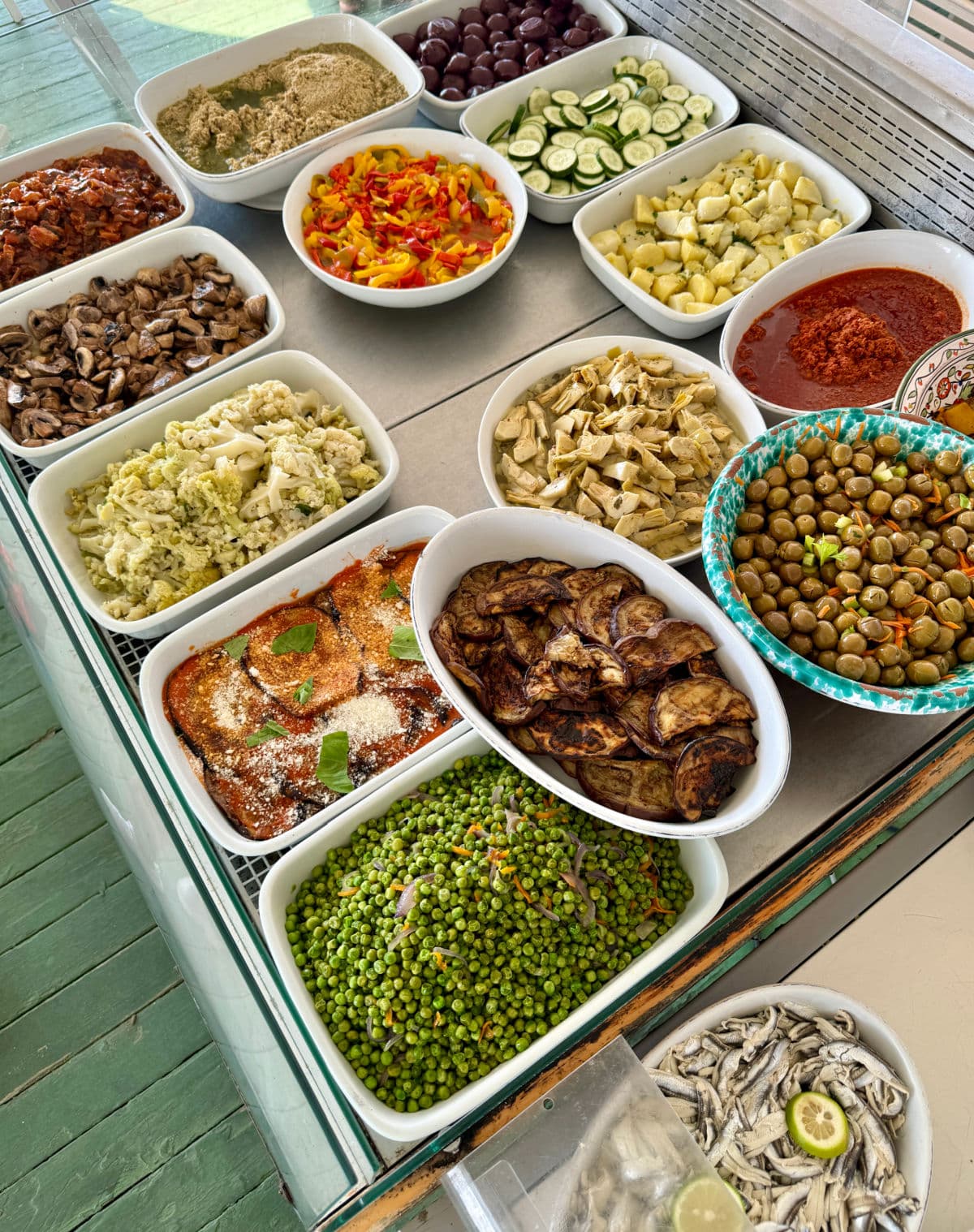
Lido Zabbara also generously served delicious local wines. After we had eaten, the festivities began! A team of musicians played and sang and led a few people from our group dancing through the restaurant.
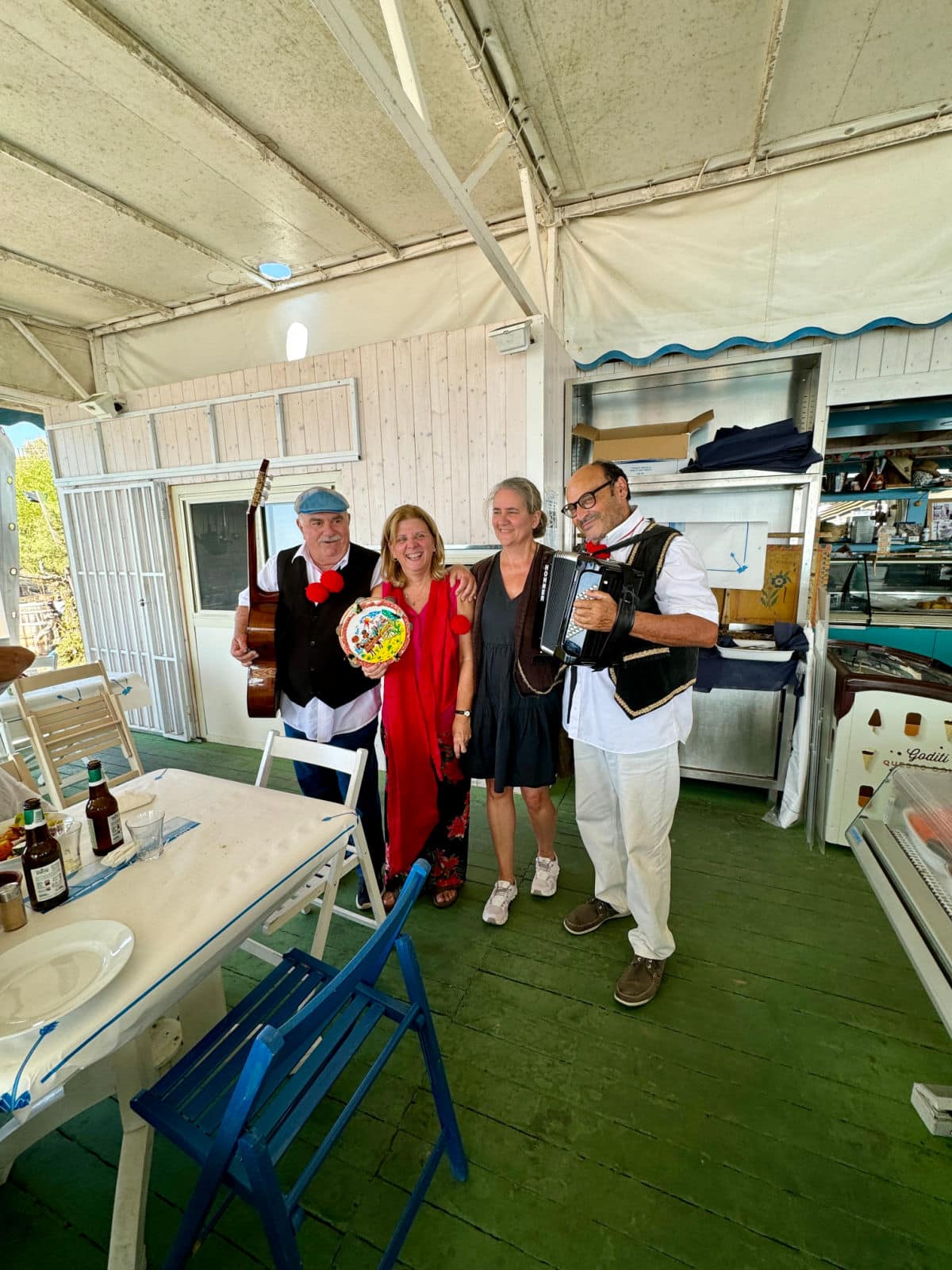
As the restaurant sits right on the beach, a few people from our group took a swim and said the water was perfect!
Another food highlight was back at Olio Centonze – the pistachio crema. It was heavenly. I bought a jar, but I wish I’d brought home three. It’s hard to find authentic products from Sicily online, but even if you do, shipping will be very high. The lesson? If you try something you like, buy it while you are there!
Agrigento
Where is Agrigento?
Agrigento is located on the southern coast of Sicily. This city is located on a plateau overlooking the sea. It was founded around 580 BCE by colonists from Greece by way of eastern Sicily as well as Crete and Rhodes.
The area also overlooks the Drago and San Biagio rivers. With this accessible location, yet protected geography, it became a notable city in the Mediterranean. This led to many impressive sites, such as temples and other impressive structures.
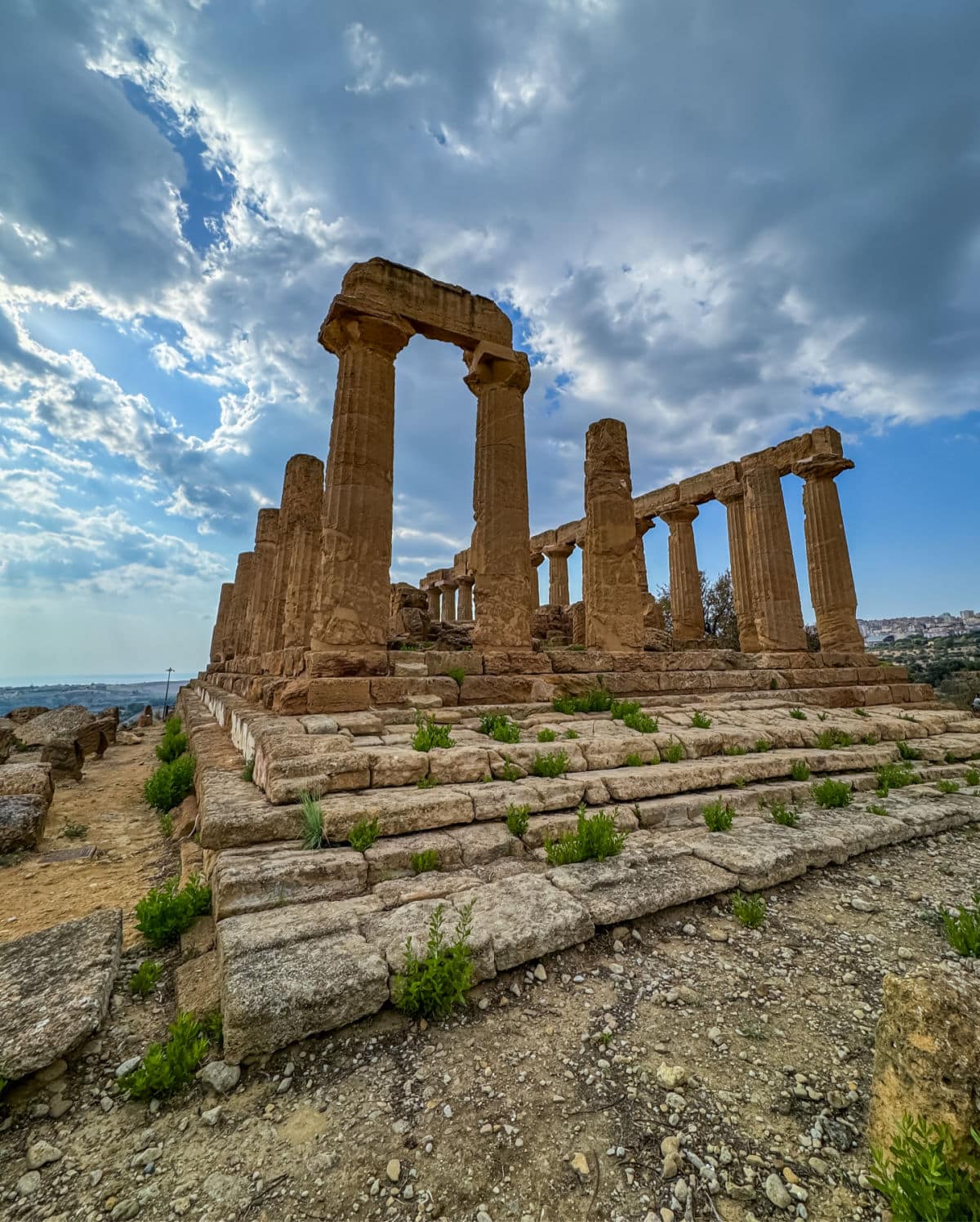
In fact, part of the draw of this area for tourists is its legacy of incredible archaeological sites. Not surprisingly, it is a UNESCO World Heritage Site.
What to do in Agrigento
When in Agrigento, visiting the archaeological sites is a must, specifically a visit to the Valley of Temples, built in 581 BCE.
Our guide, Dr. Salvatore Varisano, is an archaeologist and was so passionate about explaining the history of this archaeological park. The park features eight temples and other remains of structures built between 510 BCE and 430 BCE.
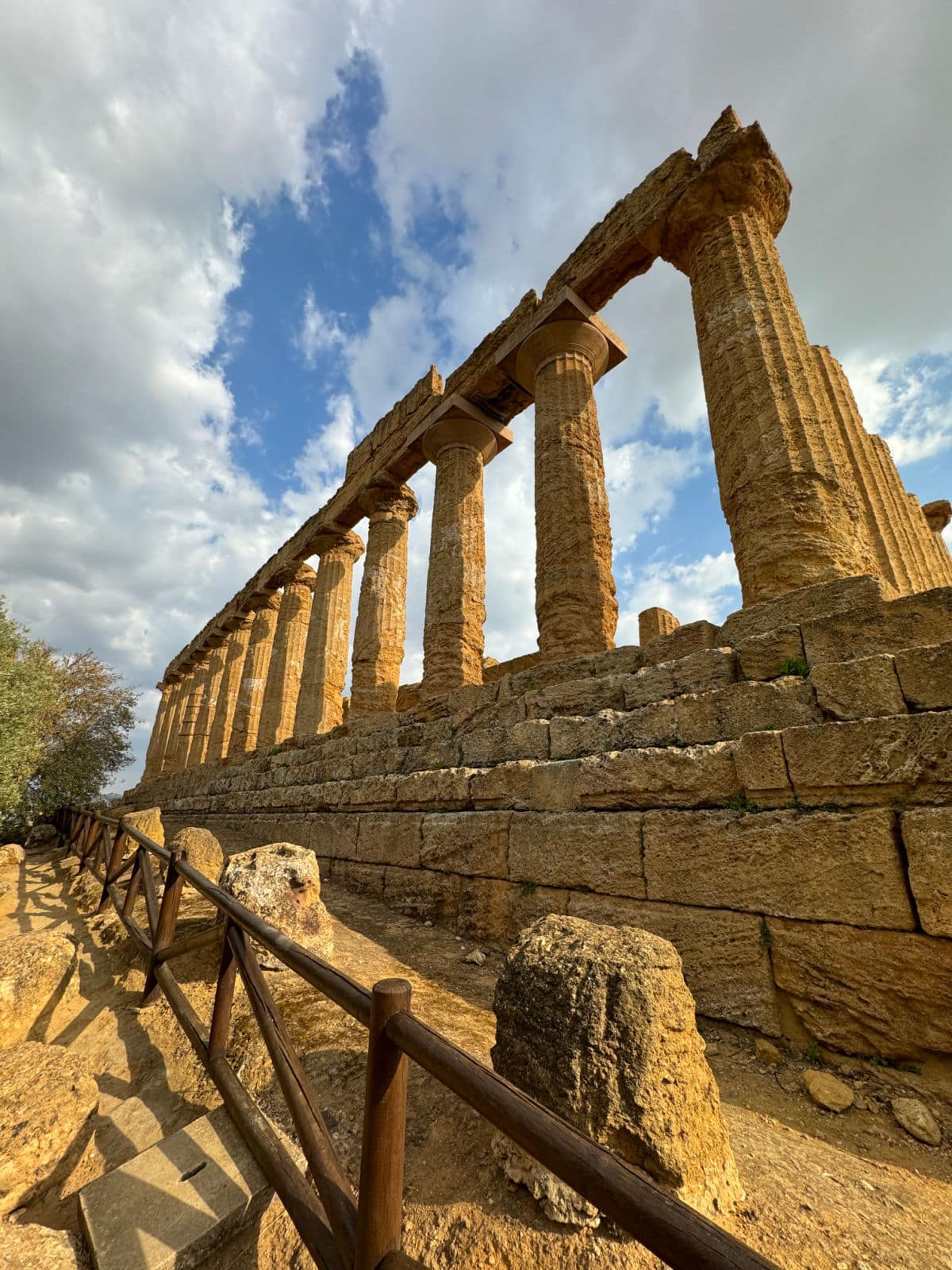
This was the city area of Agrigento during its height. Our guide told us that a large fortified city told invaders to stay away.
Unfortunately, the Carthaginians destroyed a lot of this area sometime around 406 BCE, killing everyone just for revenge. They didn’t care about the land or the structures.
Later, in the 6th century CE, the Christians entered the picture and believed the temples were pagan, so they had to be either destroyed or made into churches. This is another reason why not many temples survived. Many have been, and are continuing to be, reconstructed.
The statues found here are 1800 years old and are from molds. A new head would be fashioned and it would be put on top of one of the molds.
Many different heads would be on one style of mold. The heads were carved from a single piece of marble.
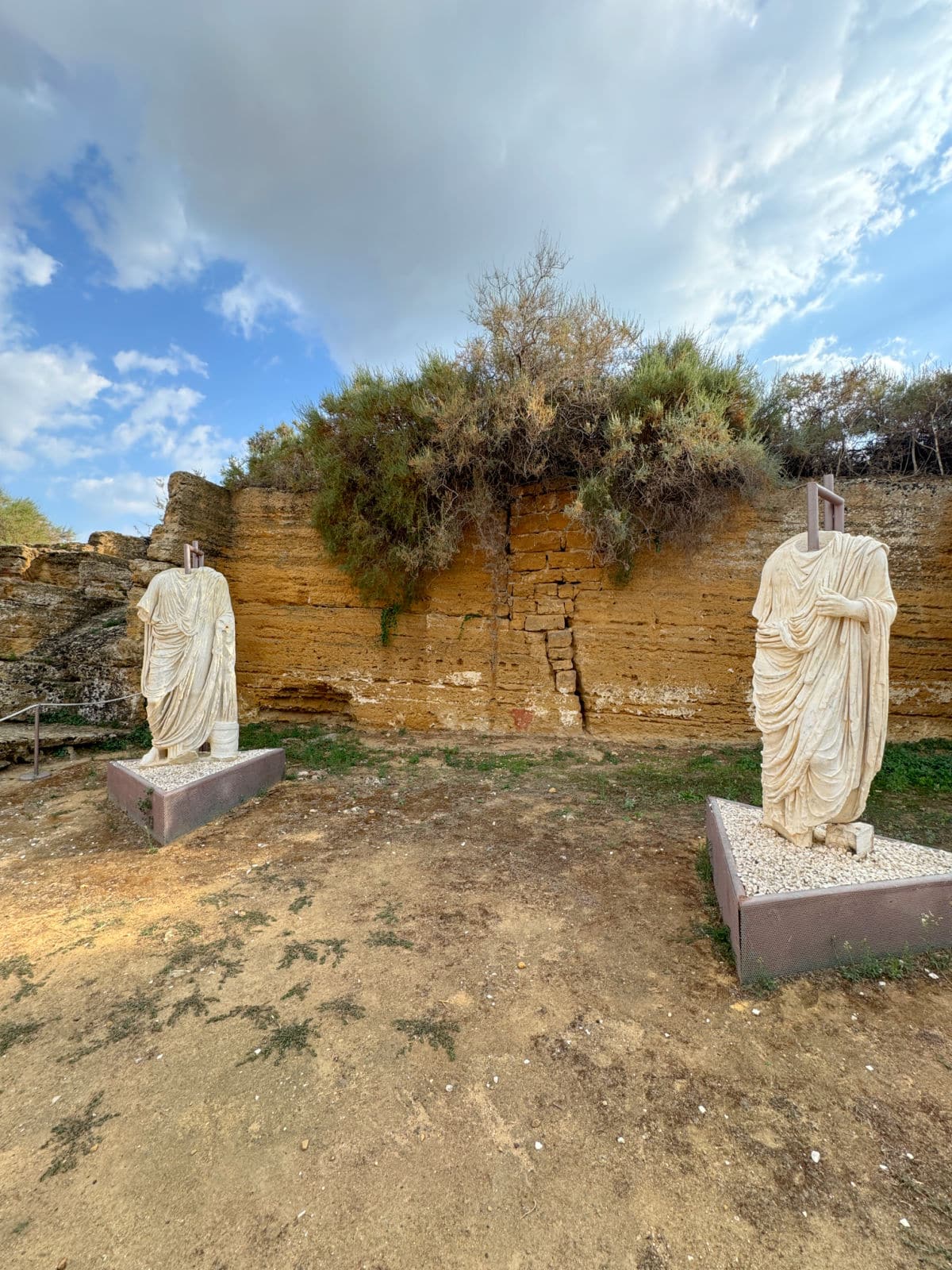
The memorial tombs around Agrigento were meant to be for one person. Sometimes people were looking for cheap burial places, however, and many people might end up in one tomb.
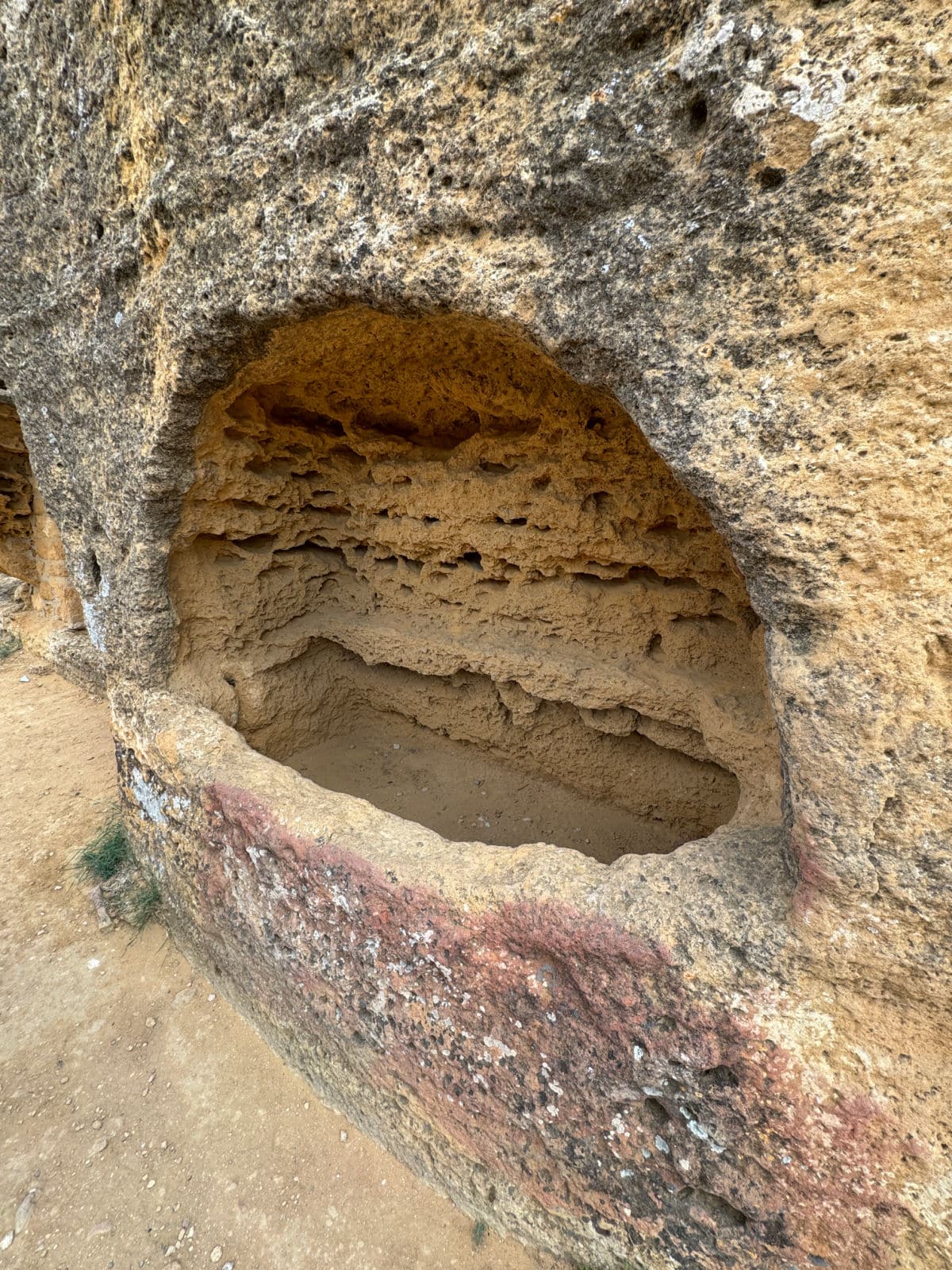
As you can see, this is one of those places where a guided walking tour is a must, especially for history buffs. Our tours were all included in the trip with Exodus Adventure Travel.
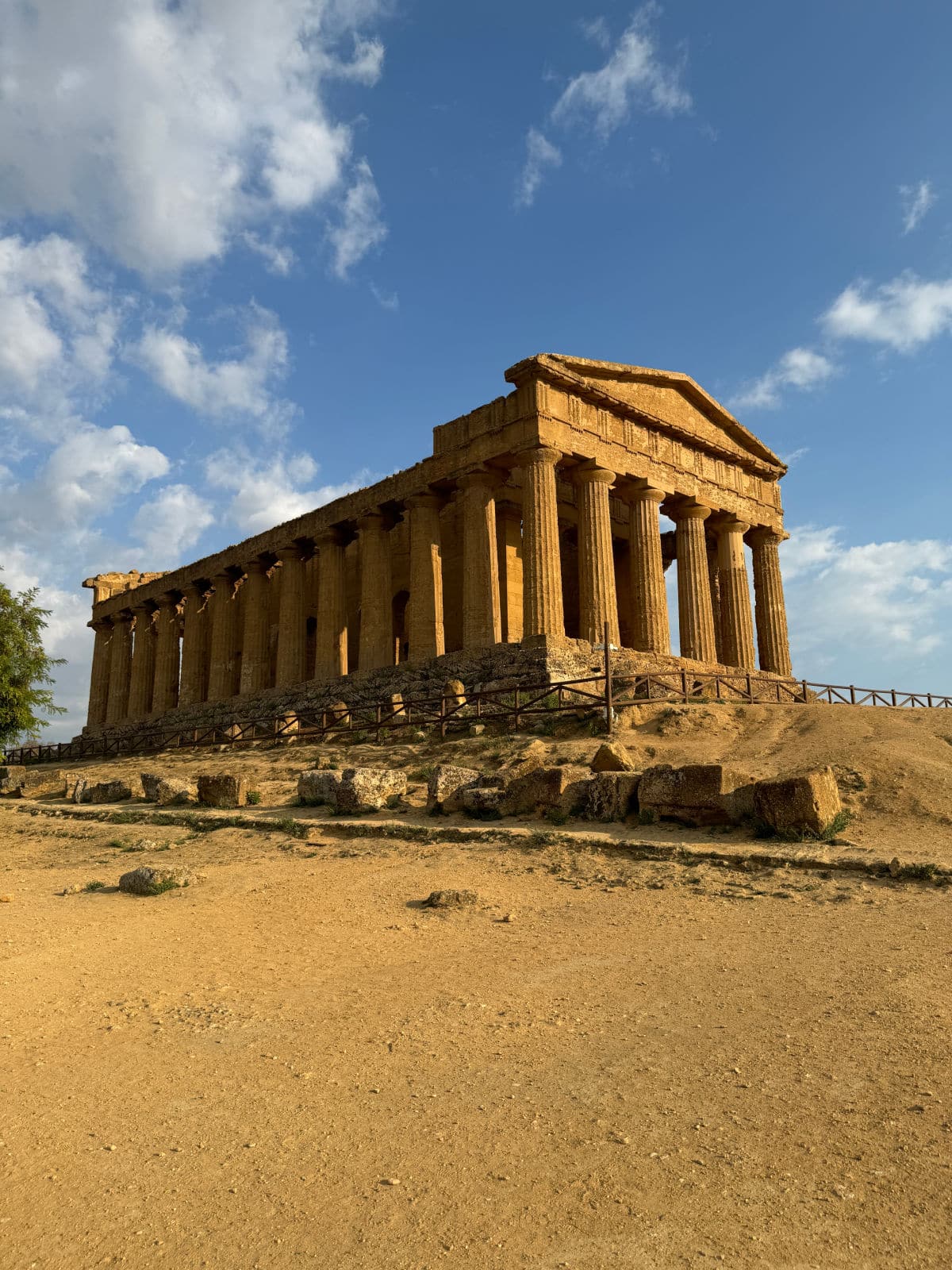
Tip: A great time to visit is when the sun is beginning to set as the temples take on a golden color.
Where to Stay in Agrigento
We stayed at Hotel Della Valle. It was lovely and spacious. I would definitely stay there again if I went back to this region of Sicily. This hotel has 2 restaurants and a pool.
Piazza Armerina
Where is Piazza Armerina?
Piazza Armerina is located in the south-central part of Sicily in the province of Enna.
Although this area has been populated for centuries, two time periods really defined its history.
The first is the Roman era with the construction of the Villa Romana del Casale.
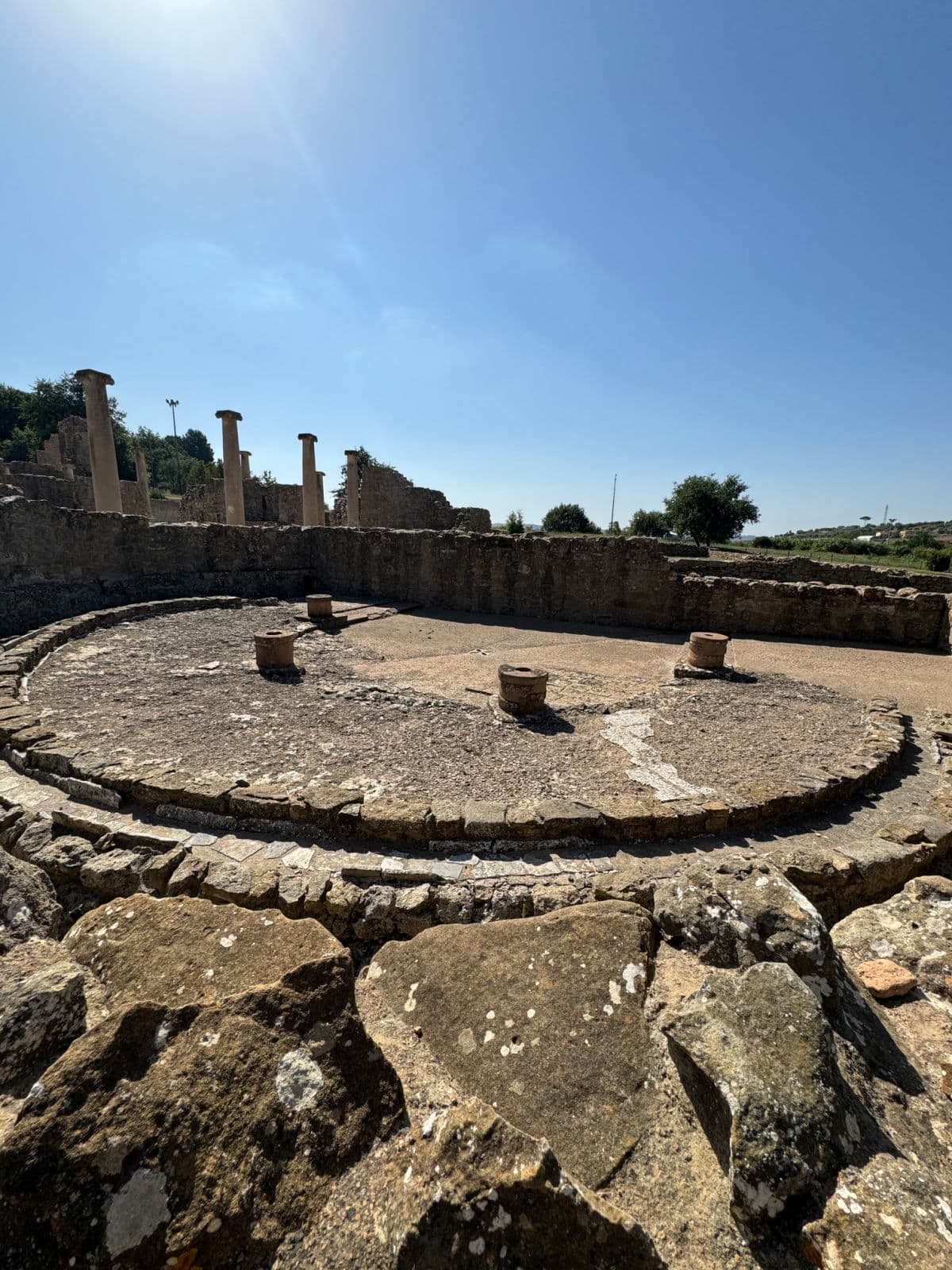
The second is the destruction of the old Piazza by William I of Sicily and repopulation during the time of William II who brought colonists from northern Italy (also known at the time as Lombardy).
This repopulation by the Lombards of Sicily means that the language spoken here has a slightly different dialect than the surrounding areas.
What to do in Piazza Armerina
The most noted site in Piazza Armerina is the Villa Romana del Casale.
This villa was constructed in the fourth century CE as a hunting lodge by a Roman patrician on the location of an older villa rustica.
The key attractions at the Villa are incredibly preserved Roman mosaics, which are spread over 37,670 square feet.
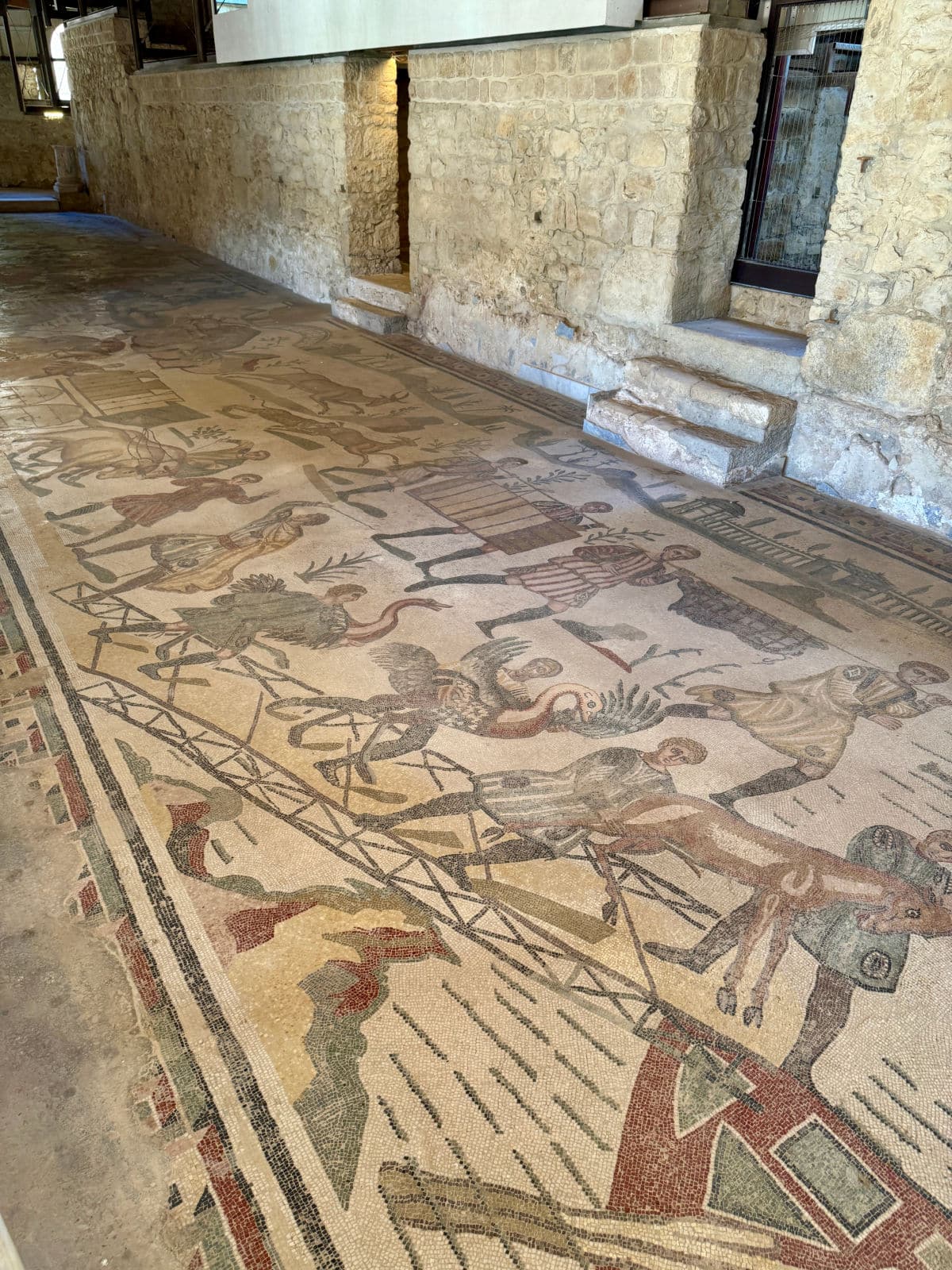
Although you can appreciate the beauty of the mosaics without one, a guided tour is a must so you can learn about the history of Villa Romana del Casale.

This is a collection of the finest mosaics in all of the Roman world, and so you want to have a guide with you so you can appreciate them in all their glory.
Piazza Armerina has a small town you can visit. We had lunch at a local spot and it was wonderful.
Ragusa
Where is Ragusa?
Like many other locations in Sicily, Ragusa is a picturesque hilltop town. Located in the southeast part of the island, this is a town with a strong Baroque influence and that makes it one of the most beautiful towns in all of Italy.

Its inland location gave it access to a lot of rock that was used to construct many of the buildings in Ragusa. This unique quality is part of the reason that it is a UNESCO World Heritage site as part of the Val di Noto.
What to do in Ragusa
If you love Baroque-style architecture, Ragusa will be a dream come true. The town has more than 50 Baroque-style churches, most of which were constructed with local stone. Eighteen of the buildings are protected by UNESCO.
One of the buildings that is a must-see in this beautiful town is the Duomo of San Georgio.
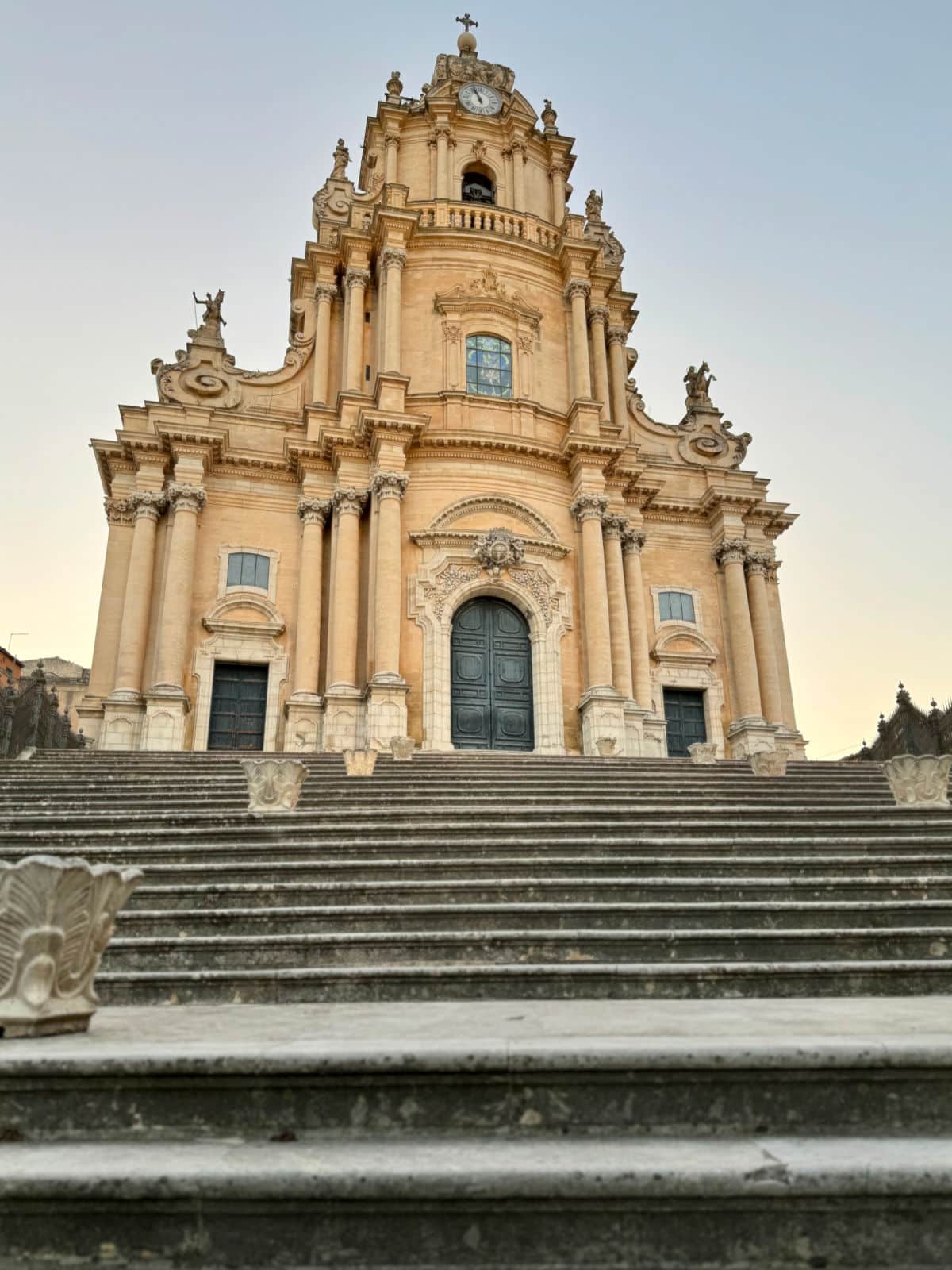
It has a variety of chapels, crypts, and stunning statues, paintings, and stained glass windows. Even if you just wander around the outside, this building is an impressive work of art in its own right.
If you’re looking for a different type of experience, in the countryside near Ragusa, you can visit a family-run farm in the area. On the farm tour that I took, the main feature was their cheese-making demonstration, and of course a cheese tasting with mozzarella and ricotta.
This will be some of the best Buffalo Mozzarella you’ve ever tasted, if not the best! The outside is made with buffalo milk, and the inside with cow’s milk.
We learned that ricotta is made with the leftover whey after mozzarella is made. Both the mozzarella and ricotta are flavorful, with a perfect texture.
What to Eat
The highlights for me were the foods I got to try at the farm. The Buffalo Mozzarella was fantastic, and so was the cannoli with filling made from their fresh-made ricotta.
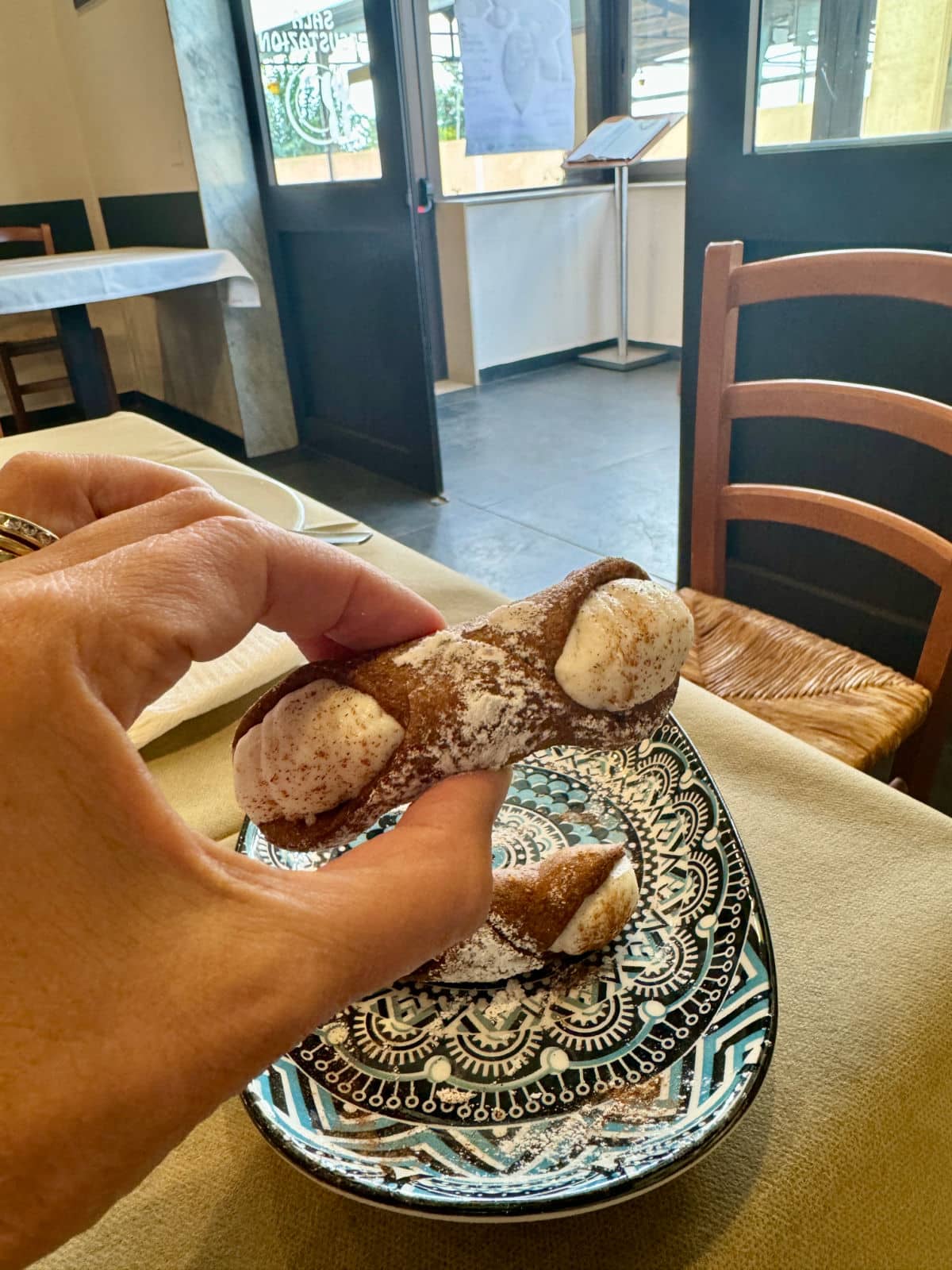
One of the most unique options to try is Ulibbo liqueur, which I am kicking myself for not buying at the farm! Ulibbo is a liqueur made with olive oil and carob, with a hint of the flavor of myrtle leaves. This is such a unique – and uniquely Sicilian – drink!
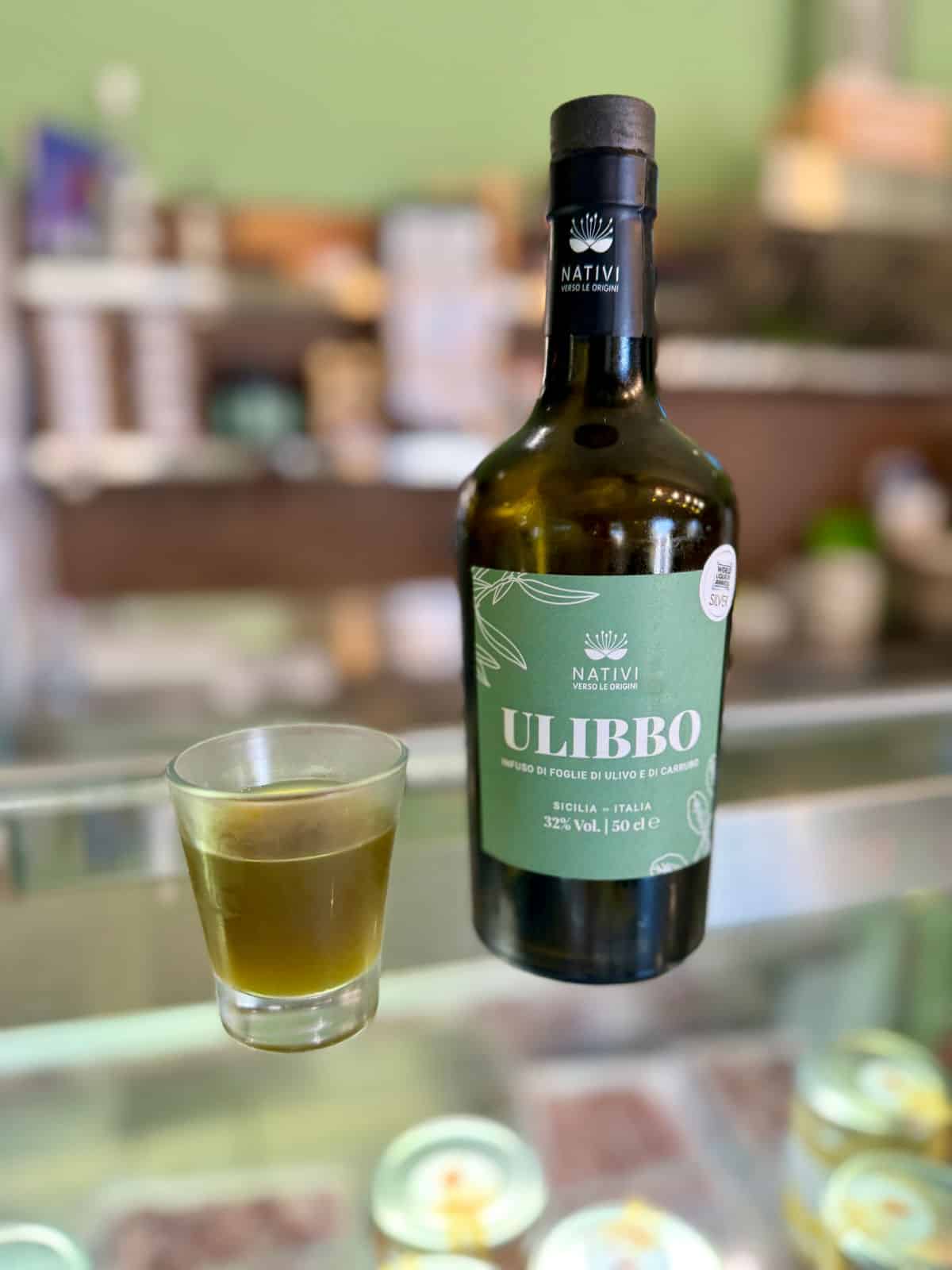
Noto
Where is Noto?
Noto is in the southeastern part of Sicily, closer to the shore than Ragusa. Like many other locations, Noto went through a series of cultures that settled there.
In Roman times, legend has it that Hercules stayed in the city after his seventh labor, and Daedalus stayed there following his flight over the Ionian Sea.
Subsequently, Noto was under the control of the Muslims, where it was the final Islamic stronghold in Sicily to fall to the Christians.
The old town, Noto Antica, is located on Mount Alvernia, however, that isn’t the city that you explore today. In 1693, an earthquake destroyed Noto, so the city you would explore today is from the early 1700s. You can actually visit the once stunning Noto Antica, the medieval city that lies in ruins, not far from Noto.
What to do in Noto
Noto was such a beautiful city to explore. Most of the palaces and churches were built with golden yellow limestone for its flexibility. When the sun begins to set, you can see how that gorgeous yellow color reflects the light.
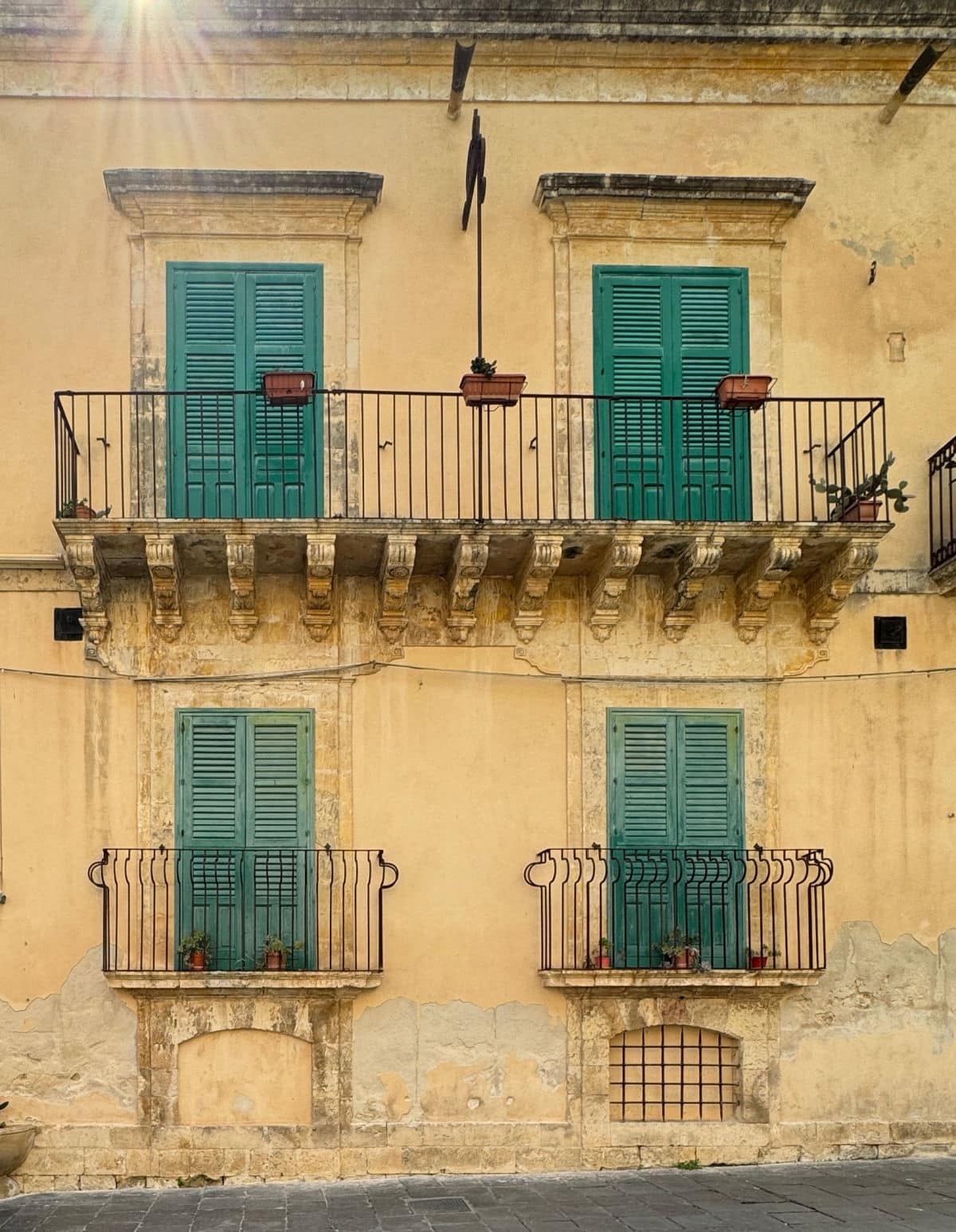
While there’s plenty to see, don’t discount just strolling around the town of Noto, as it is one of the most beautiful historic city centers in all of Sicily.
Here are some don’t-miss sights in Noto.
Walk up the steps of the bell tower of San Carlo al Corso. The views of the city are spectacular from here.
Note: The walk up the steps is very narrow and, of course, steep. If you are claustrophobic, this might not be for you.

To experience the vibrant life of Noto, wander around the market. The fresh produce that you’ll find here is incredible.

There’s also fresh seafood, spices, nuts and more. It’s also a great place for people watching as the locals go about their everyday shopping.
Looking for a photo spot that embodies Noto? Head for the Royal Gate of Noto (Porta Reale). This huge and stately arch was built to honor King Ferdinand of Borbone.
Make sure to look for the sculptures at the top of the arch: the tower (for strength), the dog (for loyalty), and the pelican (for self-sacrifice).
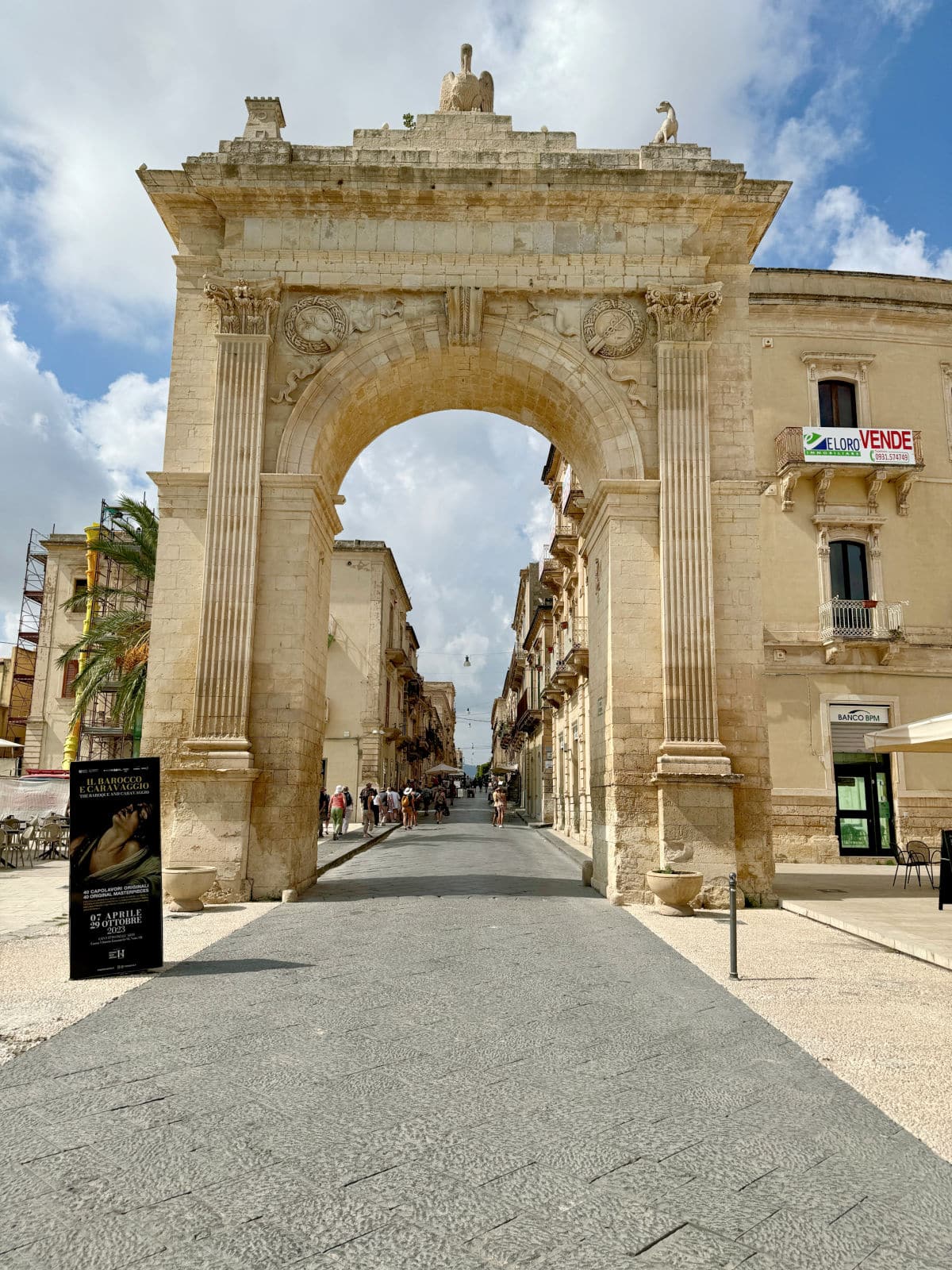
Noto is also a fun place to do some shopping as there are quite a few shops with local products.
Finally, while you are in the area it is worth heading out to the ancient ruins of Noto Antica. It is a fascinating look into the past of this area before the earthquake, and it gives you an appreciation of the major effort that it took to relocate the old city to its modern location.
What to Eat in Noto
One of the best treats that you can get, especially on a hot day, is a granita. These treats are a mixture of crushed ice with fruits or nuts and sugar. Most places that have granitas will have a variety of flavors, so there’s something for everyone.
Can’t decide? No worries! Get more than one flavor! If you want a true Sicilian experience, order it the traditional way with brioche sweet bread.

Catania
Where is Catania
Catania is located along the east coast of Sicily, almost exactly halfway between the northern and southern points.
One of the key influences in the geography of this area is that Catania is at the foot of Mount Etna, the most active volcano in Europe. It’s also the tallest of the active volcanoes in Europe at almost 11,000 feet. It’s easy to see why the name of Mount Etna comes from an ancient Greek term meaning “I burn”.
What to do in Catania
One of the oldest and largest fish markets in all of Italy, La Pescheria, can be found in Catania.
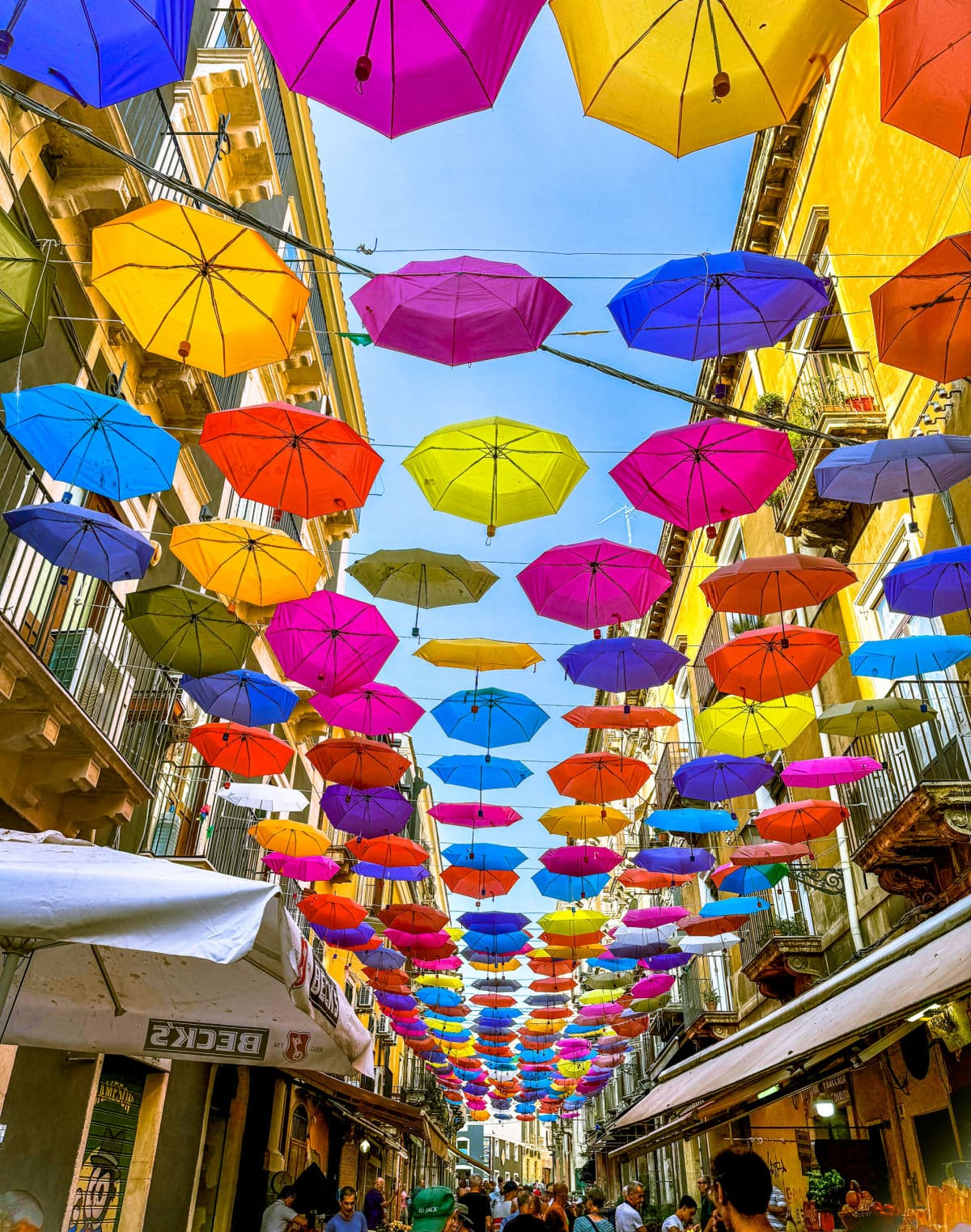
It is open in the mornings daily, except Sunday, and is everything you would imagine an Italian marketplace to be like with fishermen calling to customers and gesturing to their fine catch of fish.
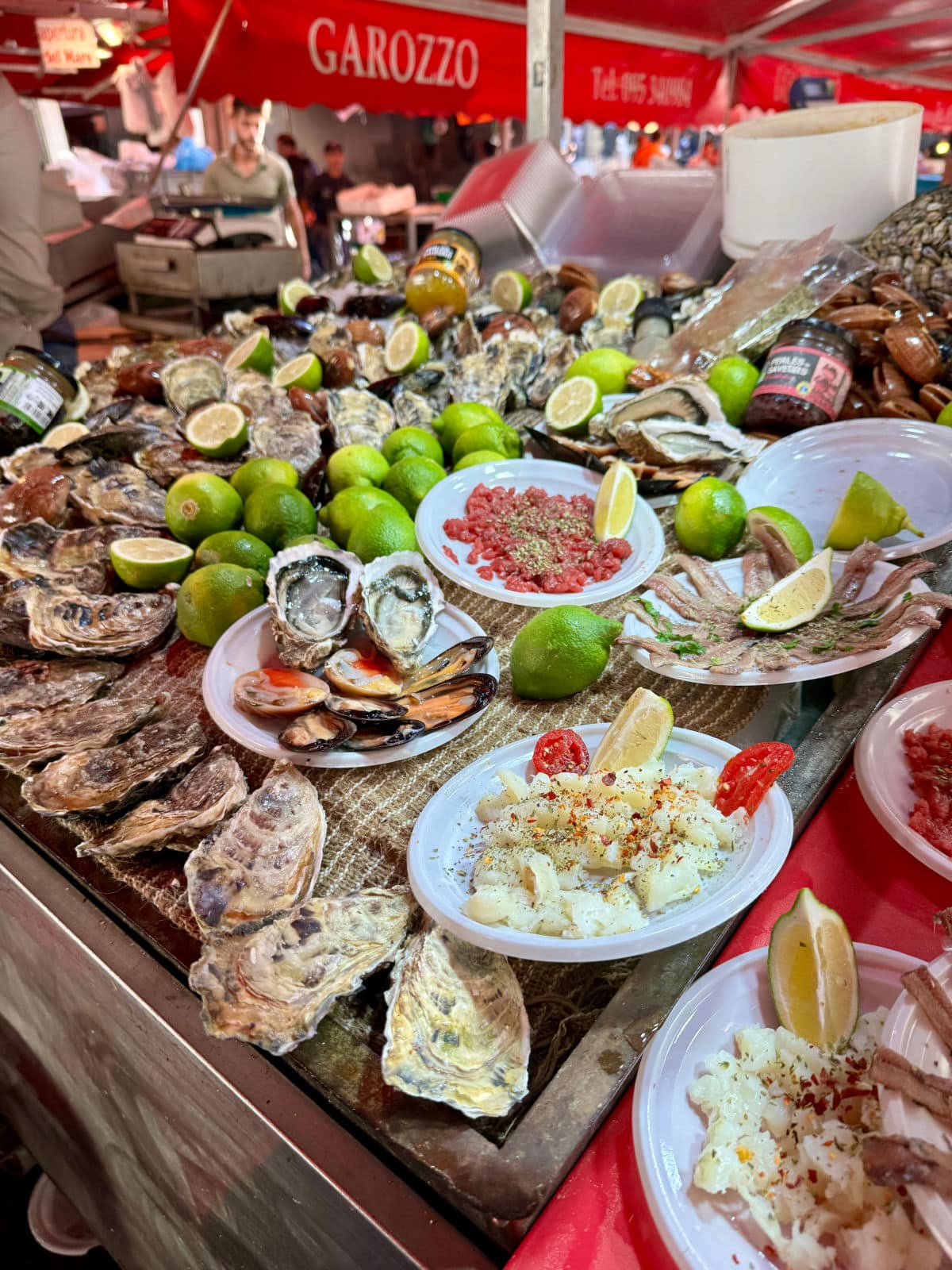
There’s also a wide variety of fruits and vegetables for sale from the nearby villages. The fish market is one of the main attractions so it will probably be busy, but I think that adds to the fun!
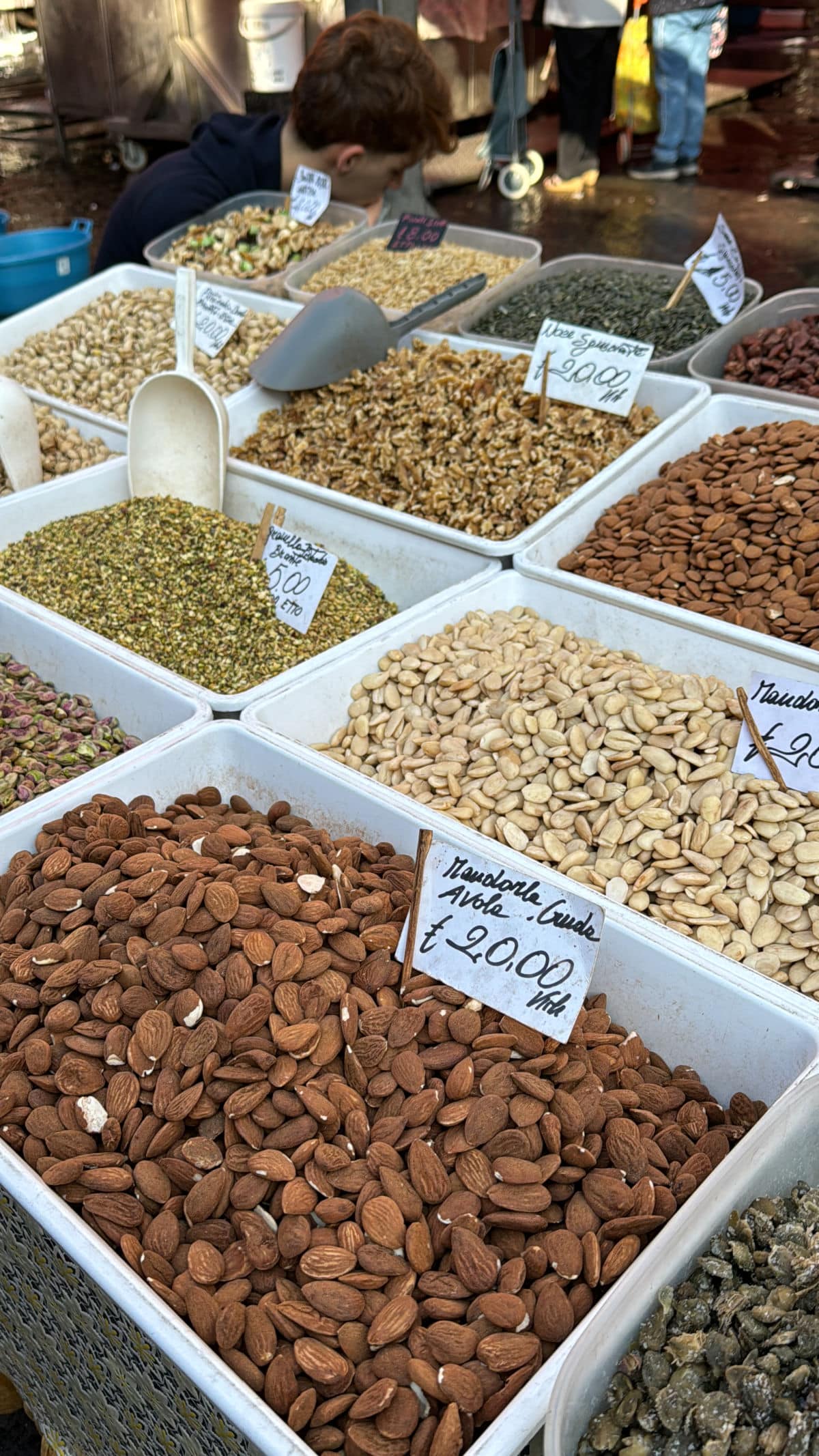
Just walking around the downtown area of Catania is nice, as well. The Basilica is beautiful.
Another option for a way to spend a relaxing day is at the Gambino Winery for a wine tasting and lunch. This winery is located on the side of Mount Etna and is surrounded by beautiful scenery and is absolutely worth visiting.
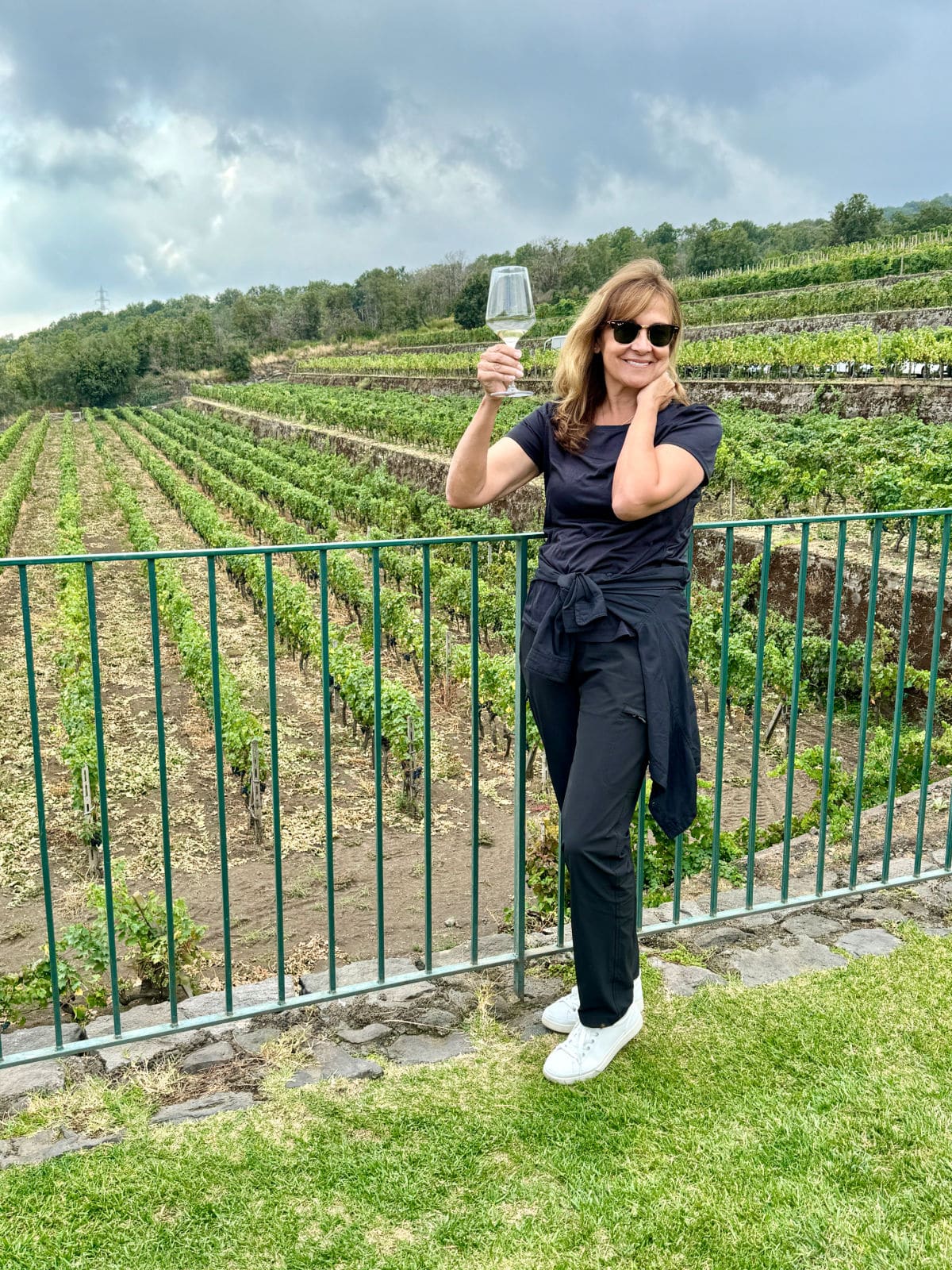
Staying in Catania as we did and taking a road trip to Mt. Etna and the winery worked out so well.
Visiting Etna and the winery were a couple of the best things we did while in Sicily. I was glad Exodus found the best way to fit it all in!

If you prefer a more active day at Mount Etna, you can explore some of the hiking trails. Depending on which crater you choose, the hike will take around 1-2 hours and is 3 miles or less.
For the ultimate relaxation day, head on over to the Esagono Beach Club. We found this beach club on our last day in Catania. It was beautiful, right on the beach with pools and chairs, with a wonderful onsite restaurant. You can pay for the day and it was so inexpensive. We went during a less crowded time of year, so peak season may be more expensive.
You can even rent a small room where you can change and shower, relax, and watch TV to take a break from the sun. I would love to spend a day here relaxing if I go back to Catania! Though the beaches are rocky, it’s still beautiful.

What to Eat in Catania
If you’re looking for some of the best authentic Sicilian pasta and pizza, swing by Ristorante Maré. Their fried calamari is a specialty. It’s so tender and perfectly crisp.

This is the restaurant right next door to the beach club. Order Pasta alla Norma, a Sicilian specialty, or anything with seafood.
The Linguine with Clam Sauce was wonderful. They also had one of the most delicious pizzas I’ve ever eaten!
Where to stay in Catania
We stayed at the Four Points Sheraton. The rooms were spacious, the hotel had a pool, and it was convenient to restaurants. Though you couldn’t walk to the downtown area, you could easily grab an Uber.
Don’t miss these other hidden gems in southern Italy.
Frequently Asked Questions
Although the weather can be wonderfully mild, Sicily does have a wet season and a dry season. The rainy months are between November and April. You’ll find warm summertime temperatures in July and August. For the best weather, May and June in the late spring and September and October in the fall are perfect.
English is often taught as a second language in schools in Sicily. Especially among the younger generations, you’ll find people who can speak English. In addition, places that cater to tourism often have people around who can help translate, if needed.
Like Italy and much of Europe, the euro is the accepted form of currency. Most places will also accept credit cards, but for smaller shops or restaurants, you’ll want to ask first.
Top Tips
Good Walking Shoes
Good walking shoes are always a good idea. Sicily is such a beautiful place and still retains characteristics of centuries gone by with many cities having cobblestone streets.
Leather sneakers were my go-to shoes the whole time I was in Sicily. In addition to being comfortable, you can wear them with just about anything.
Power Converter
Make sure to bring a converter so you can power your electronics. I like the ones that have twin USB ports because one converter allows me to charge everything I might bring with me.
Restaurant Hours
When planning your day, keep in mind that many restaurants take an afternoon break. Lunch hours will be from noon to around 3:30 PM, but dinner service won’t start until 7:30 PM and then goes until 11 PM.
You can find snacks to tide you over, of course, but you’ll want to think ahead when planning any main meals and eat on Sicily time like a local!
QR Codes
Want more information about an area? Look for QR codes at some monuments and churches. With your cell phone, you can hold up the phone’s camera to the QR code, click the link, and pull up more information about the location.
Religious Buildings
Modesty in religious buildings is an important part of visiting Sicily. Make sure to cover any bare shoulders or thighs with a scarf or sarong when visiting. Also, make sure not to interrupt a church service. Should you arrive when one has already started, enter quietly.
Packing List
Don’t forget the essentials when visiting this charming Italian island in Southern Italy . Grab this free printable packing list to help you plan your wardrobe and everything you need to bring!
Have you been to Sicily yet? Tell me what I missed!
More Places to See in Italy
Best Things to Do in Palermo Italy




